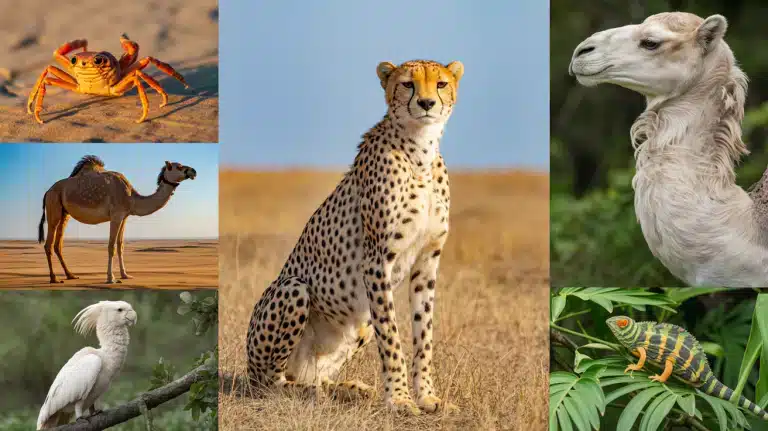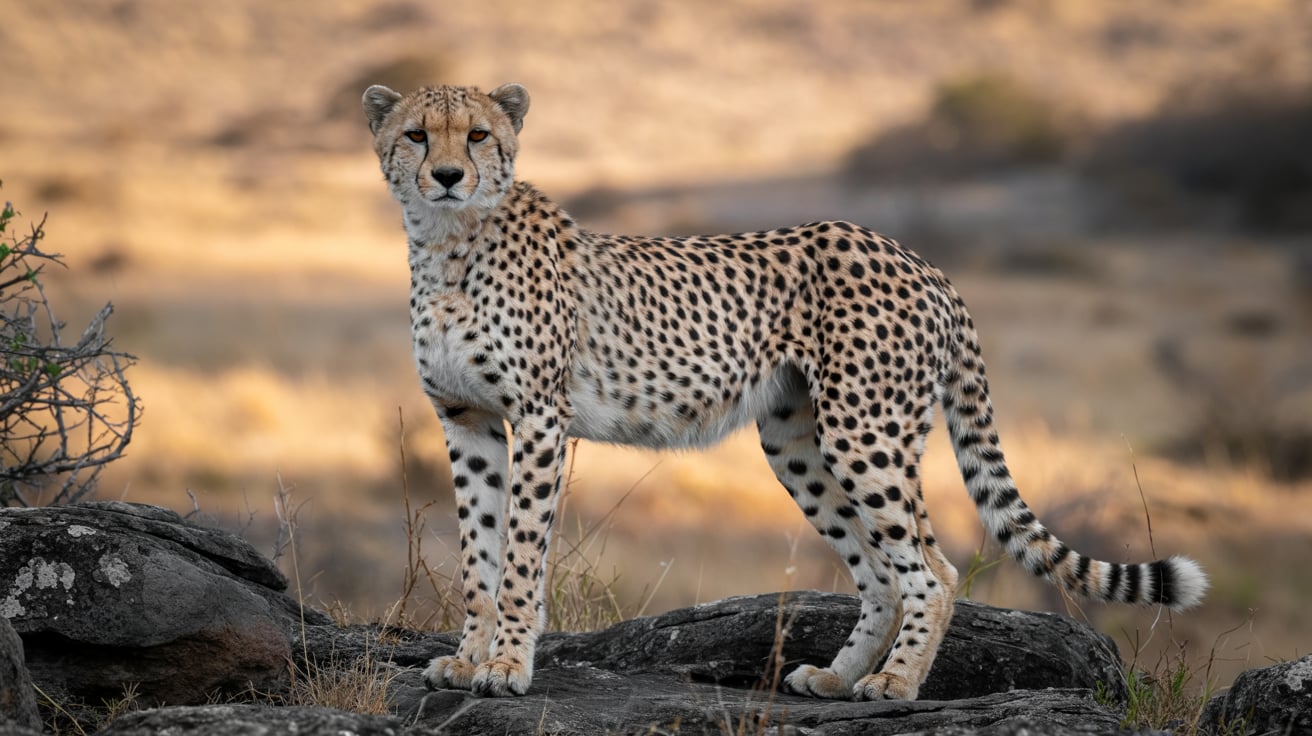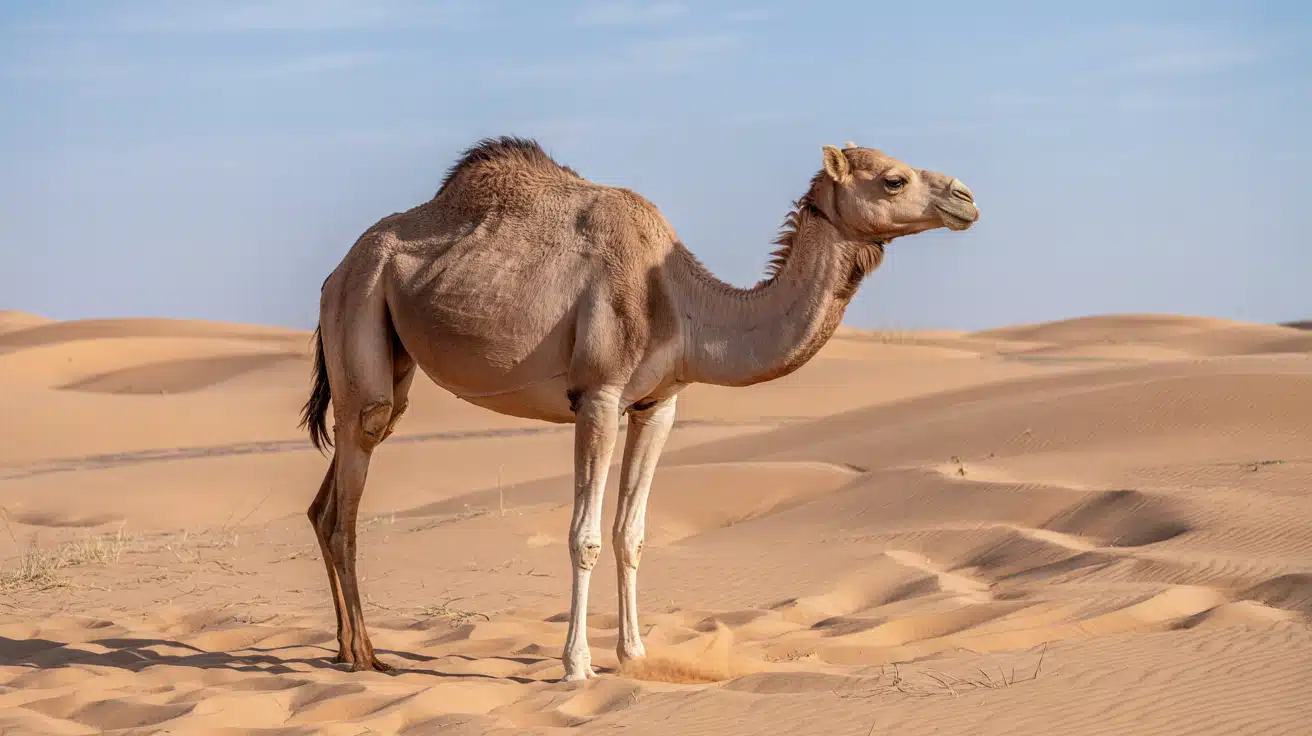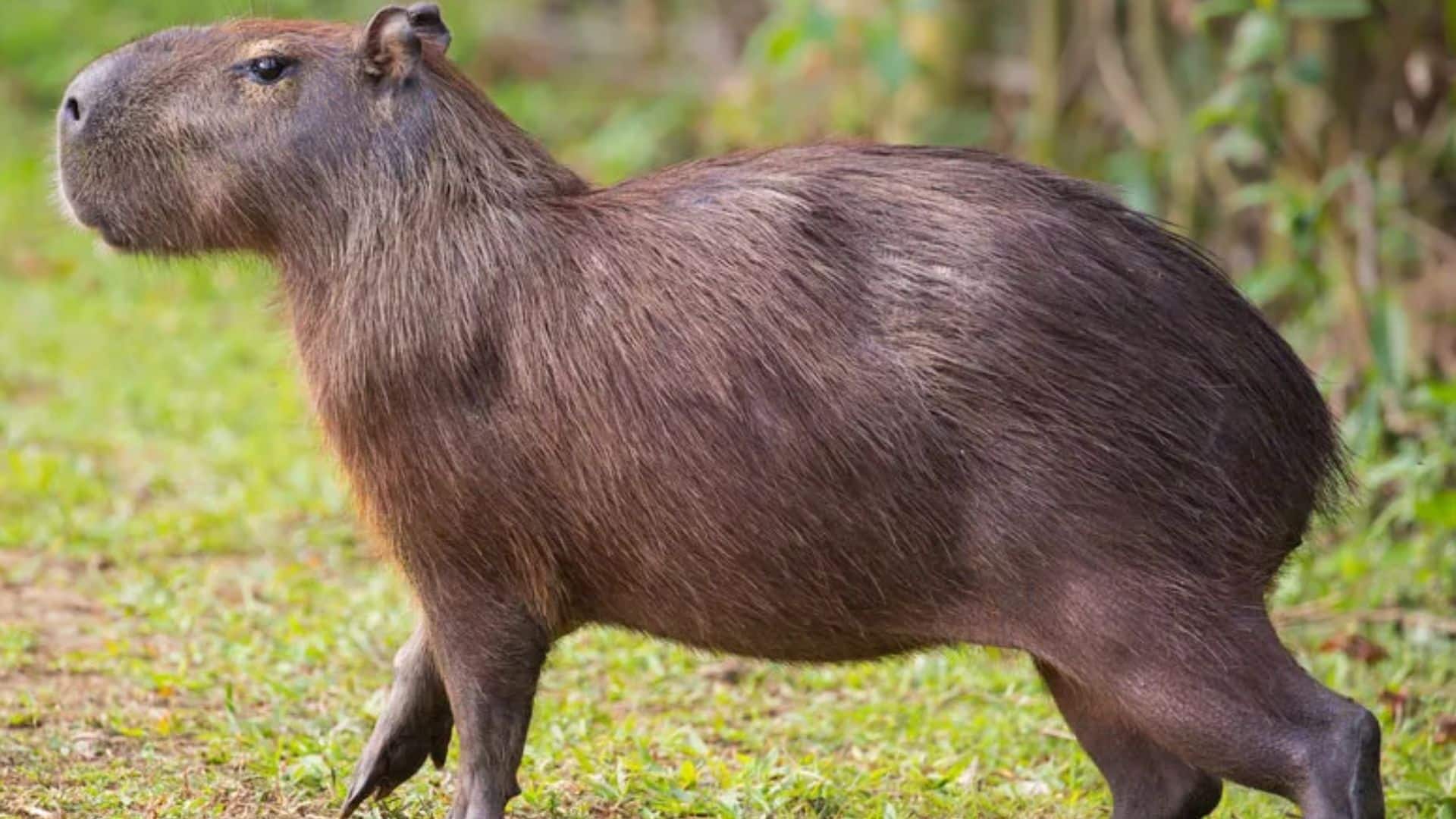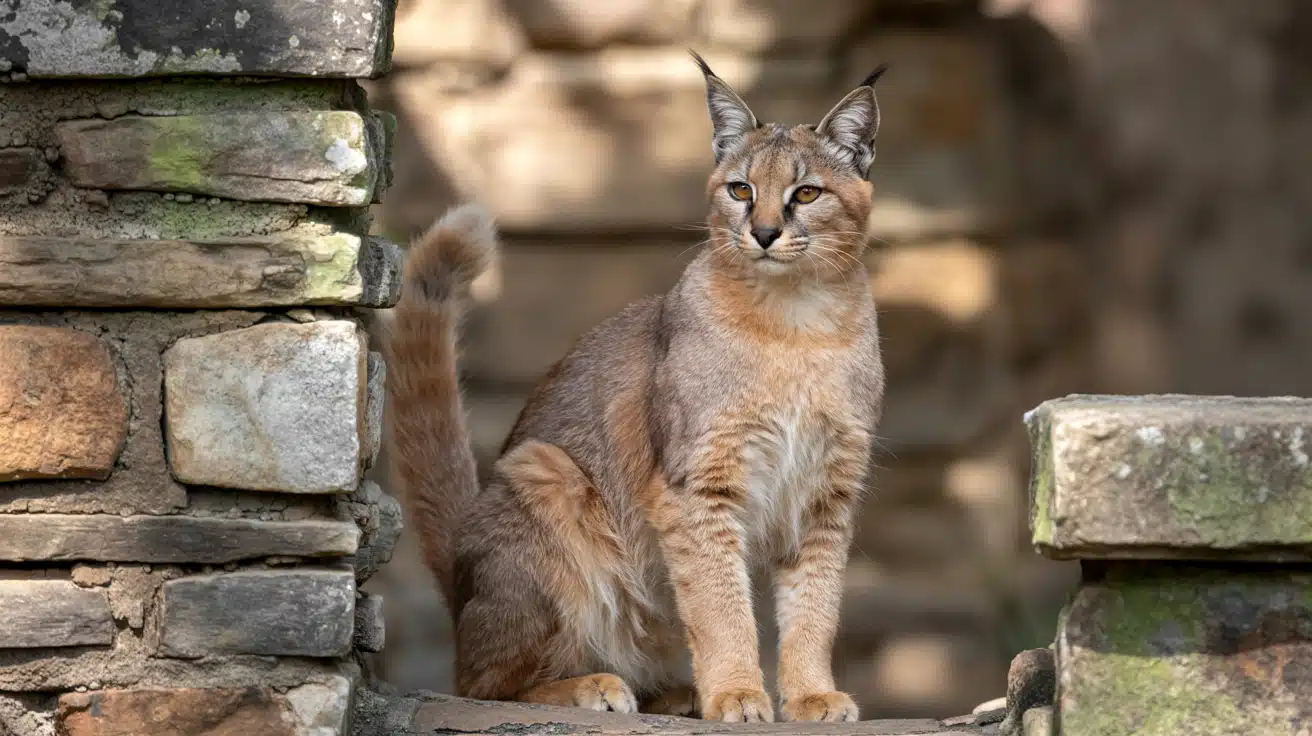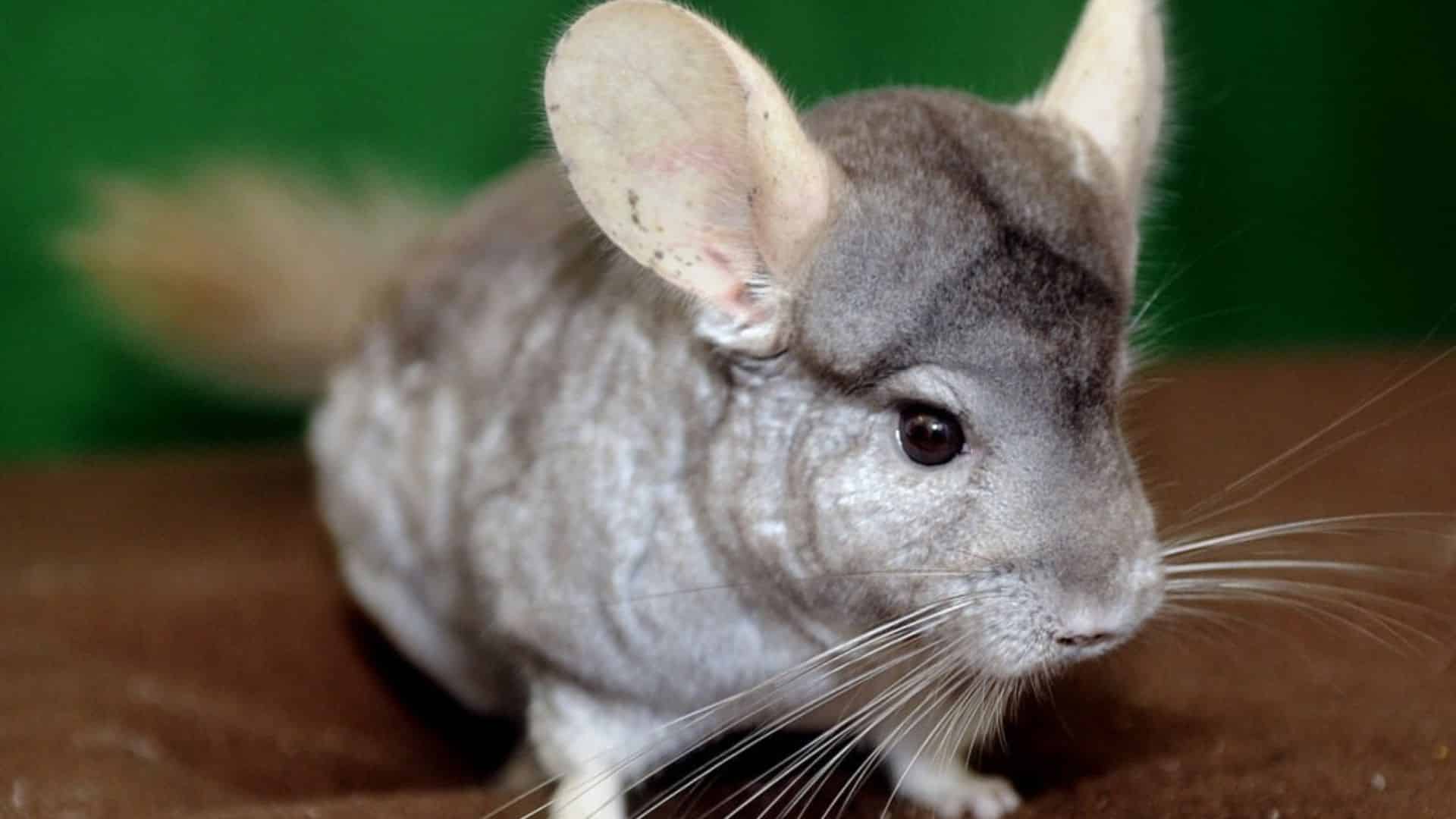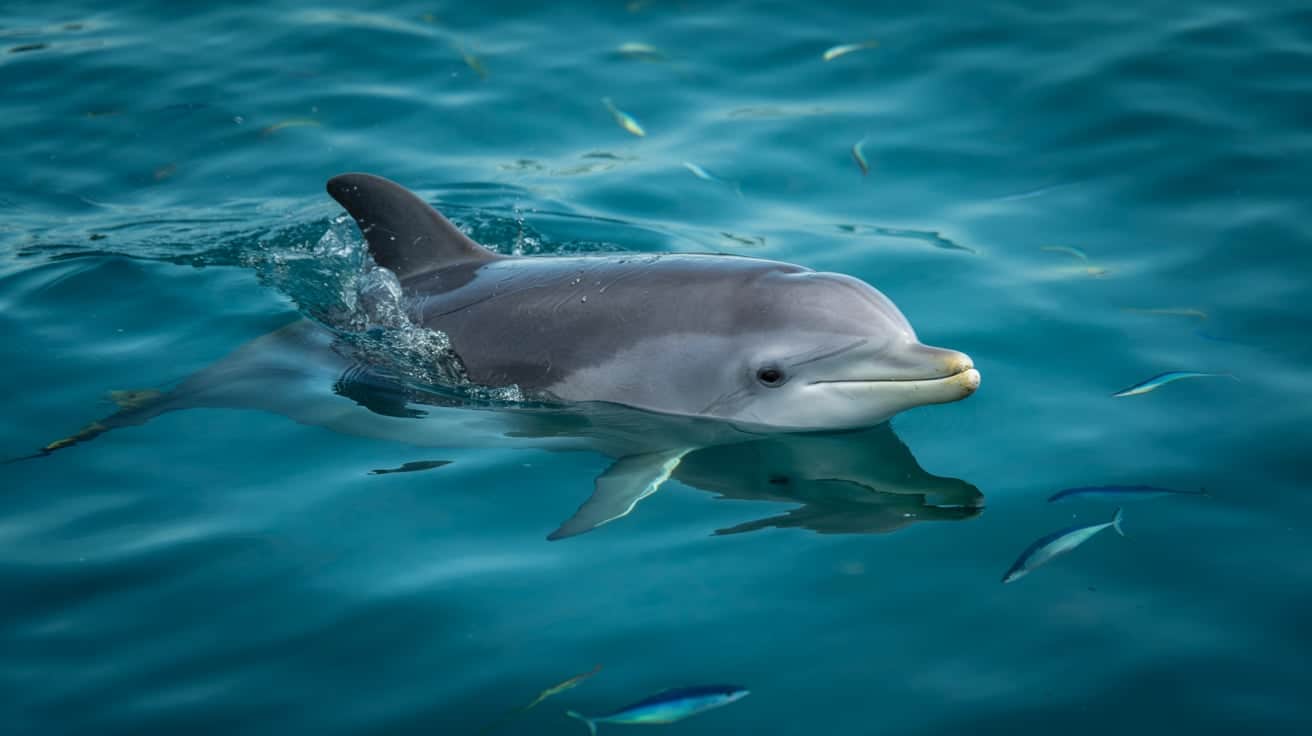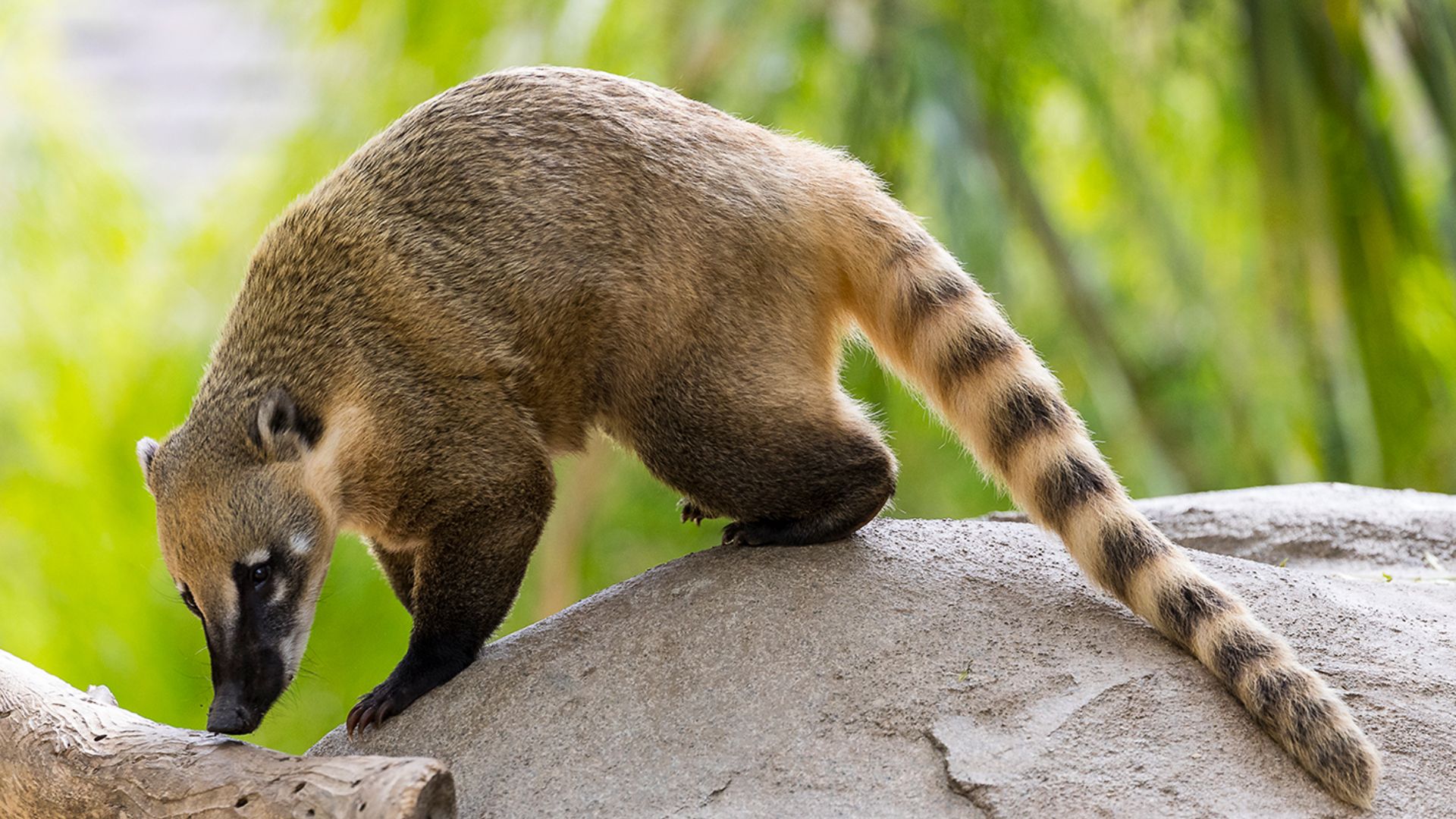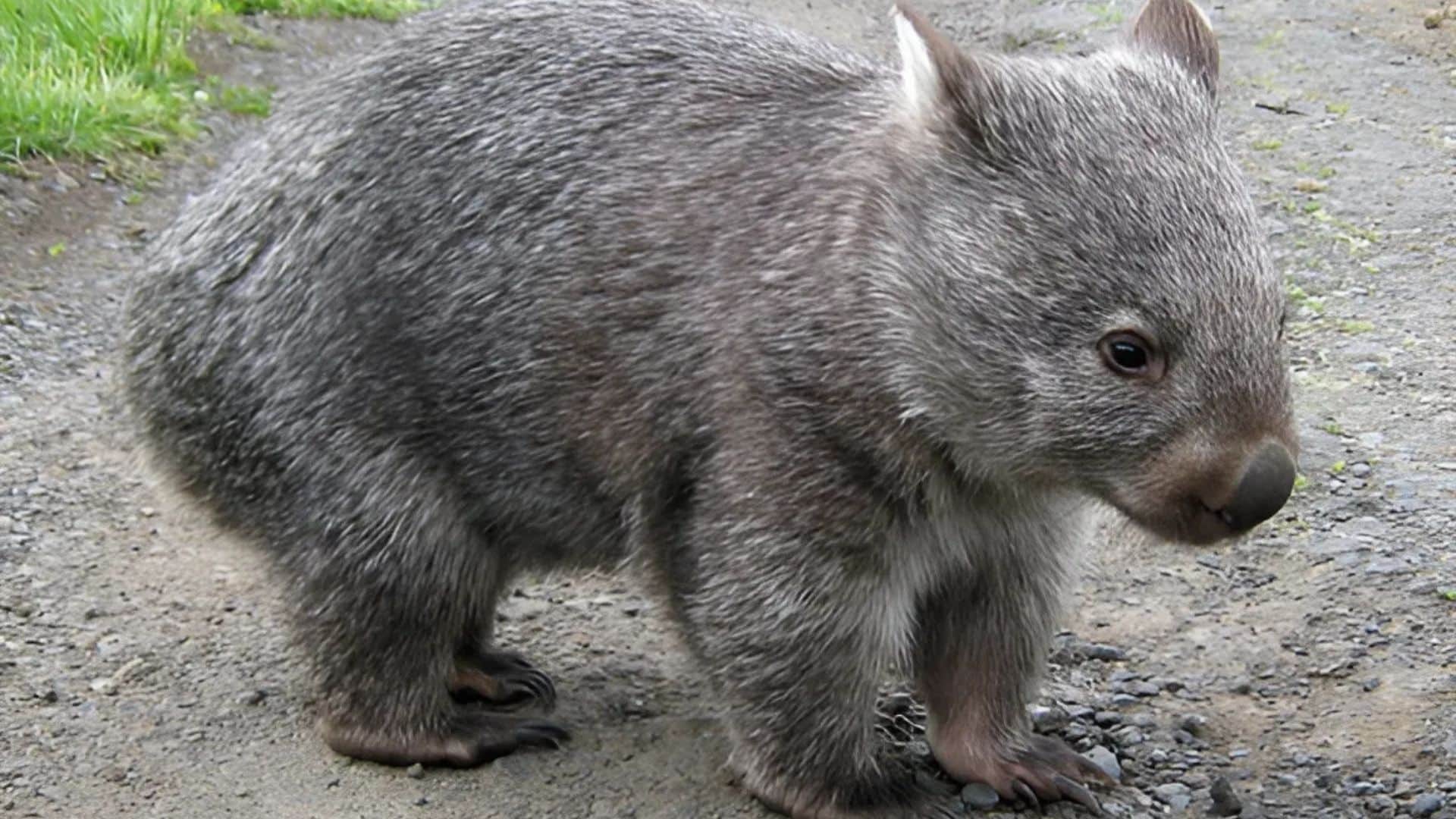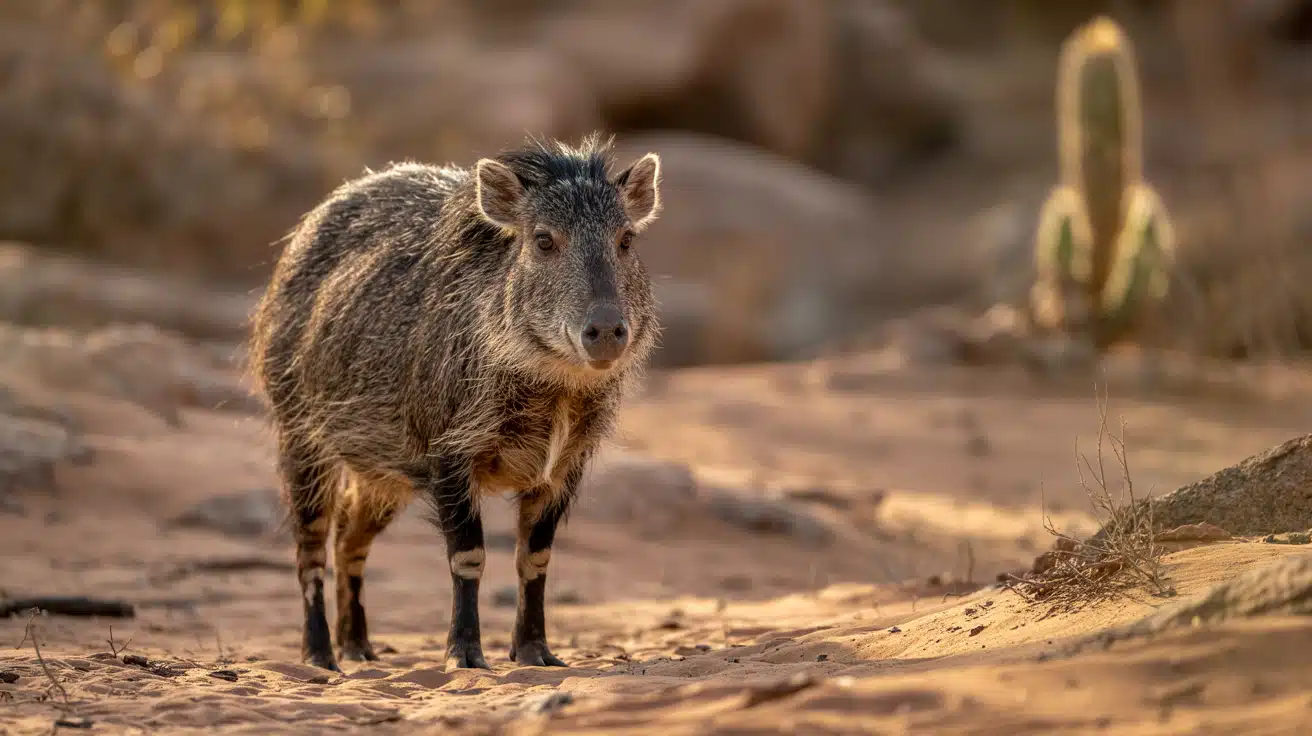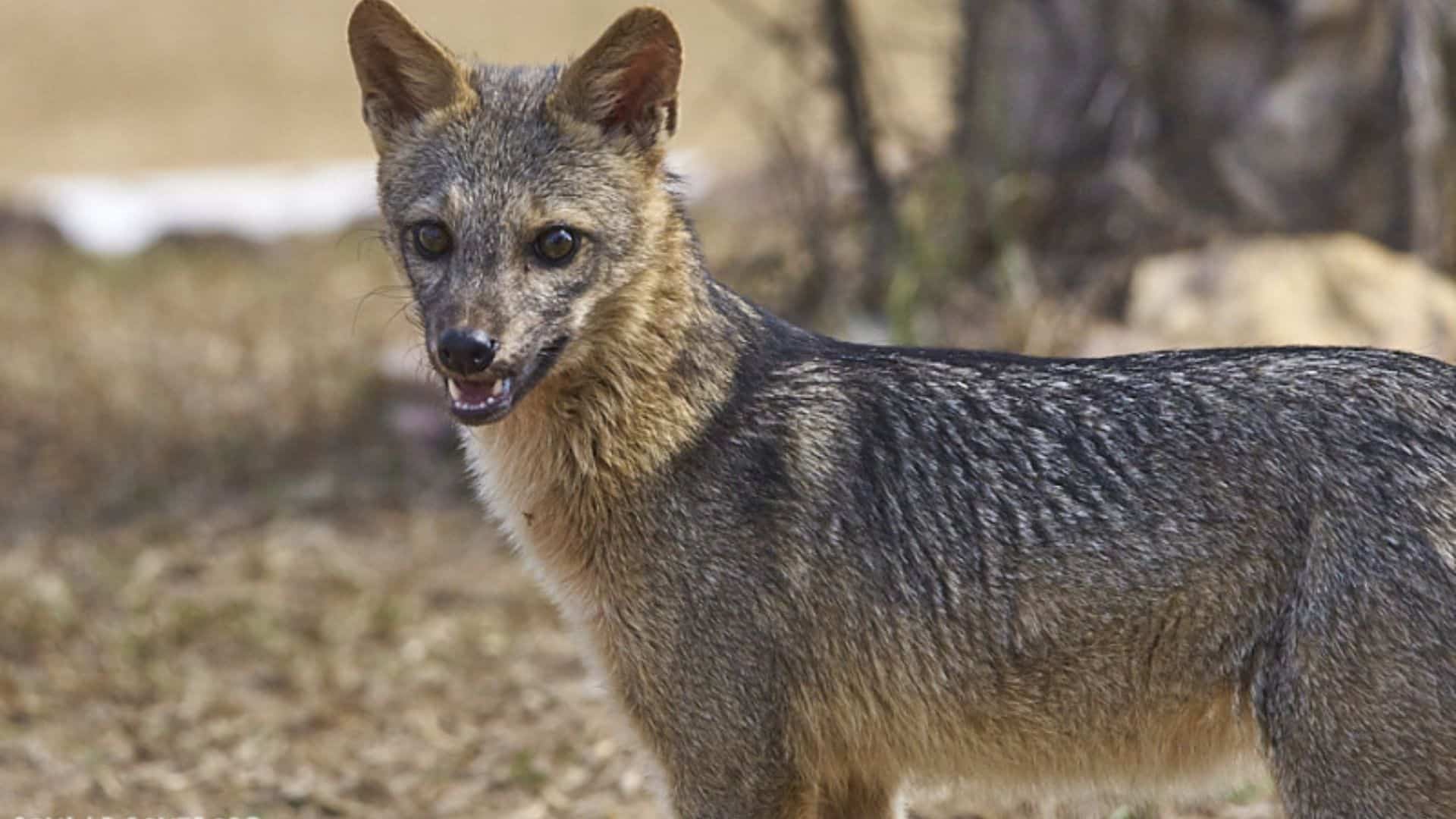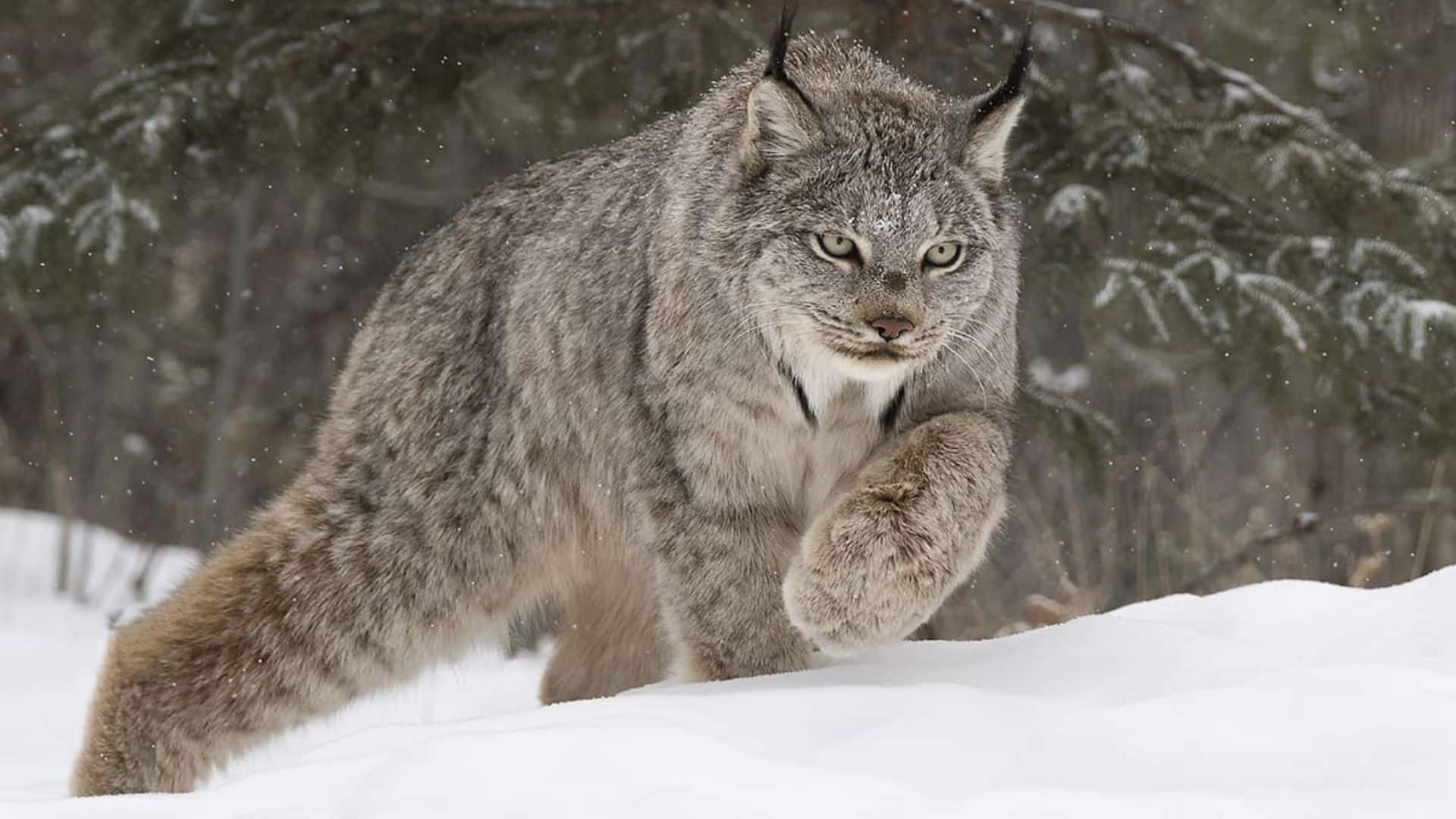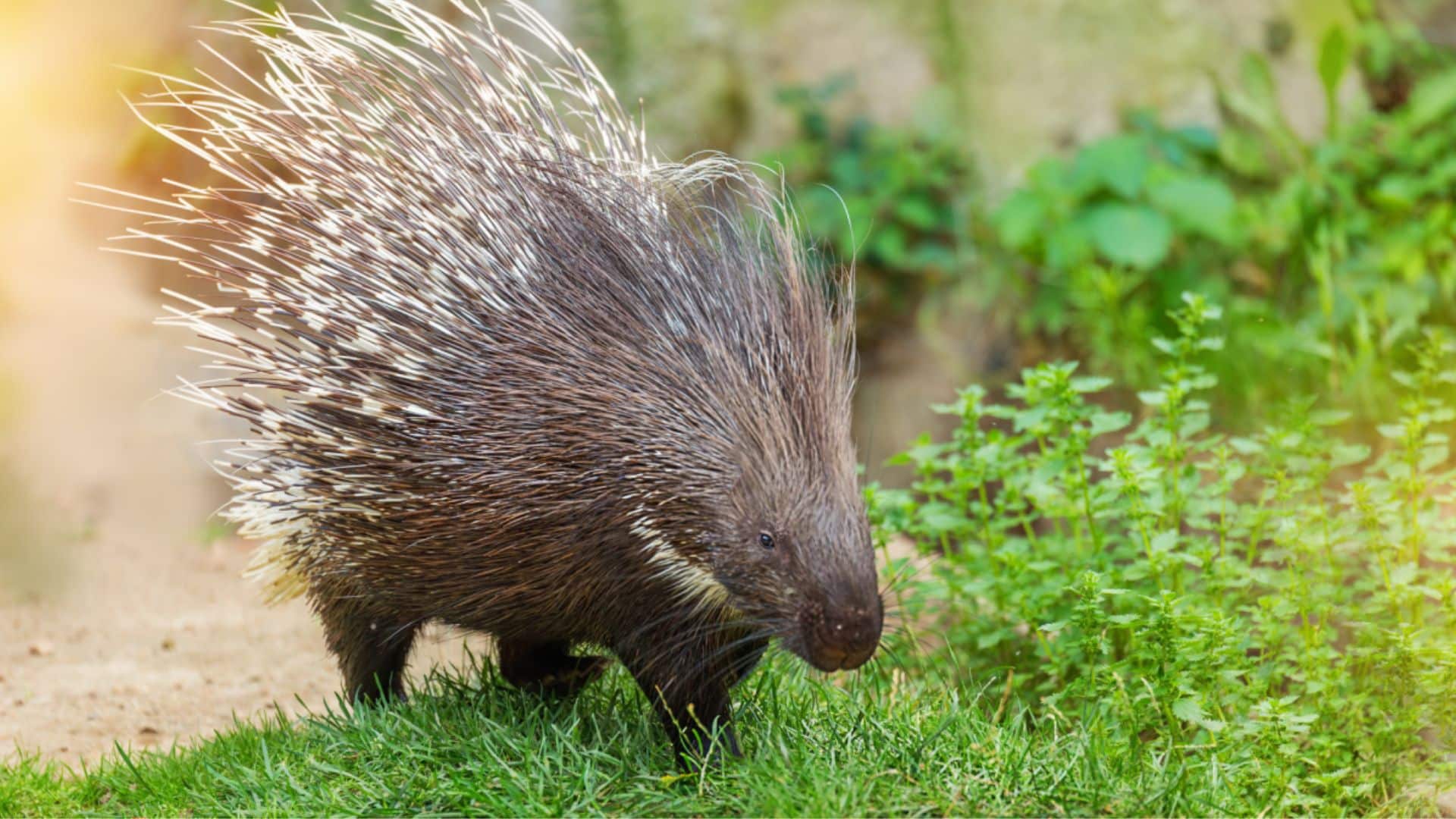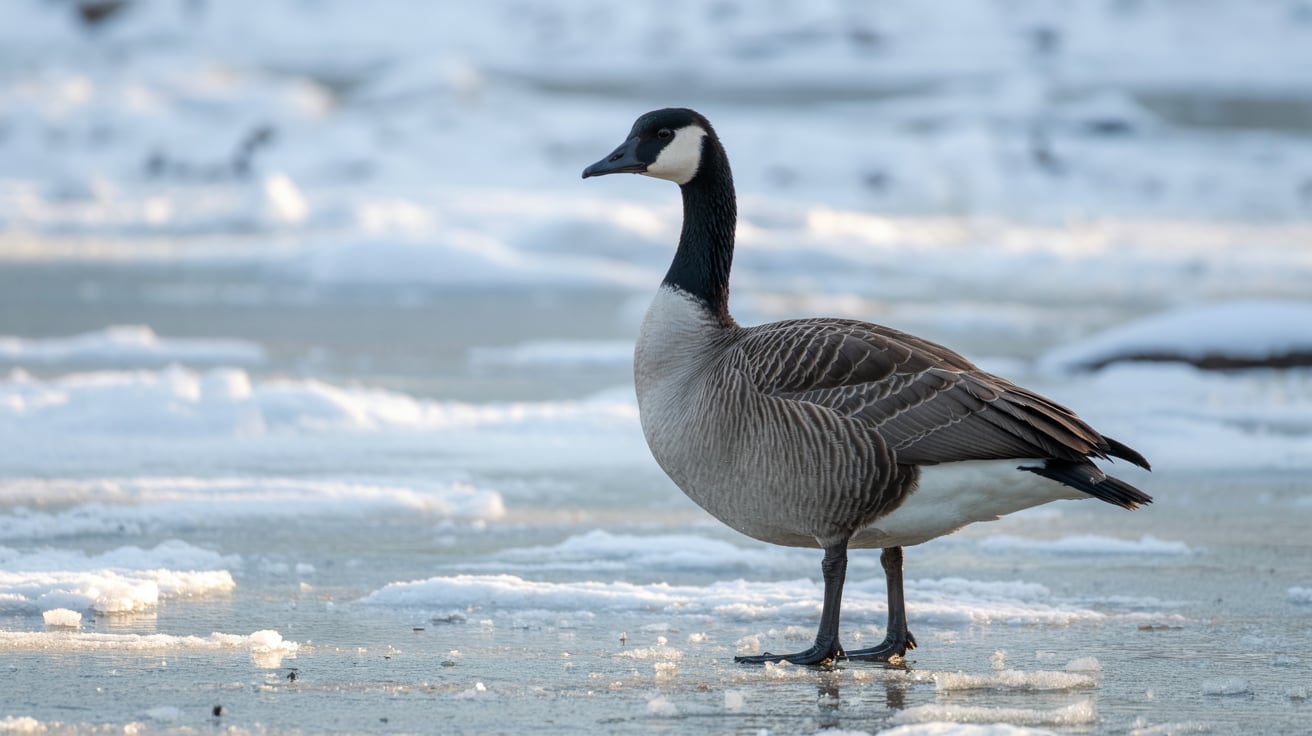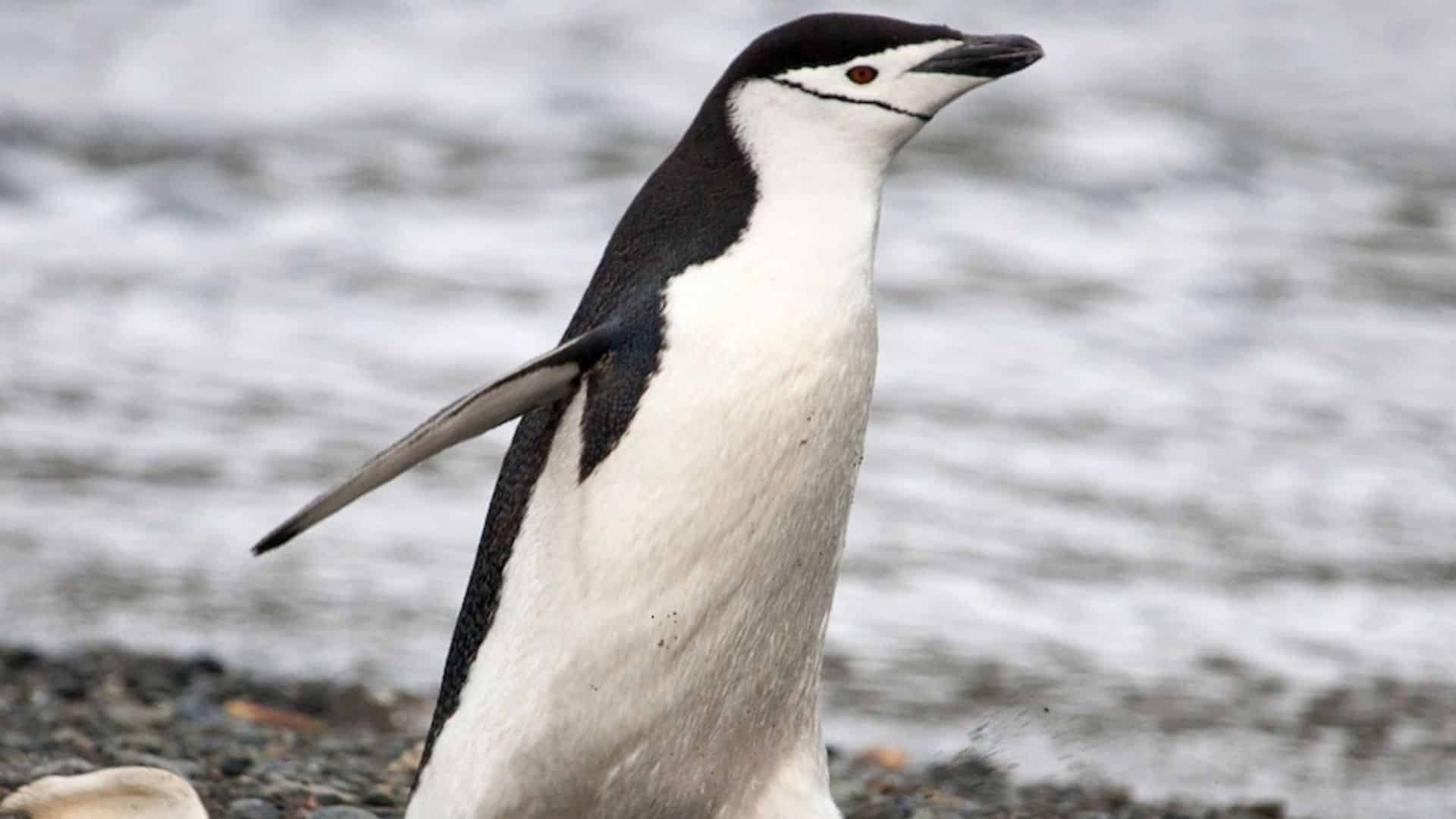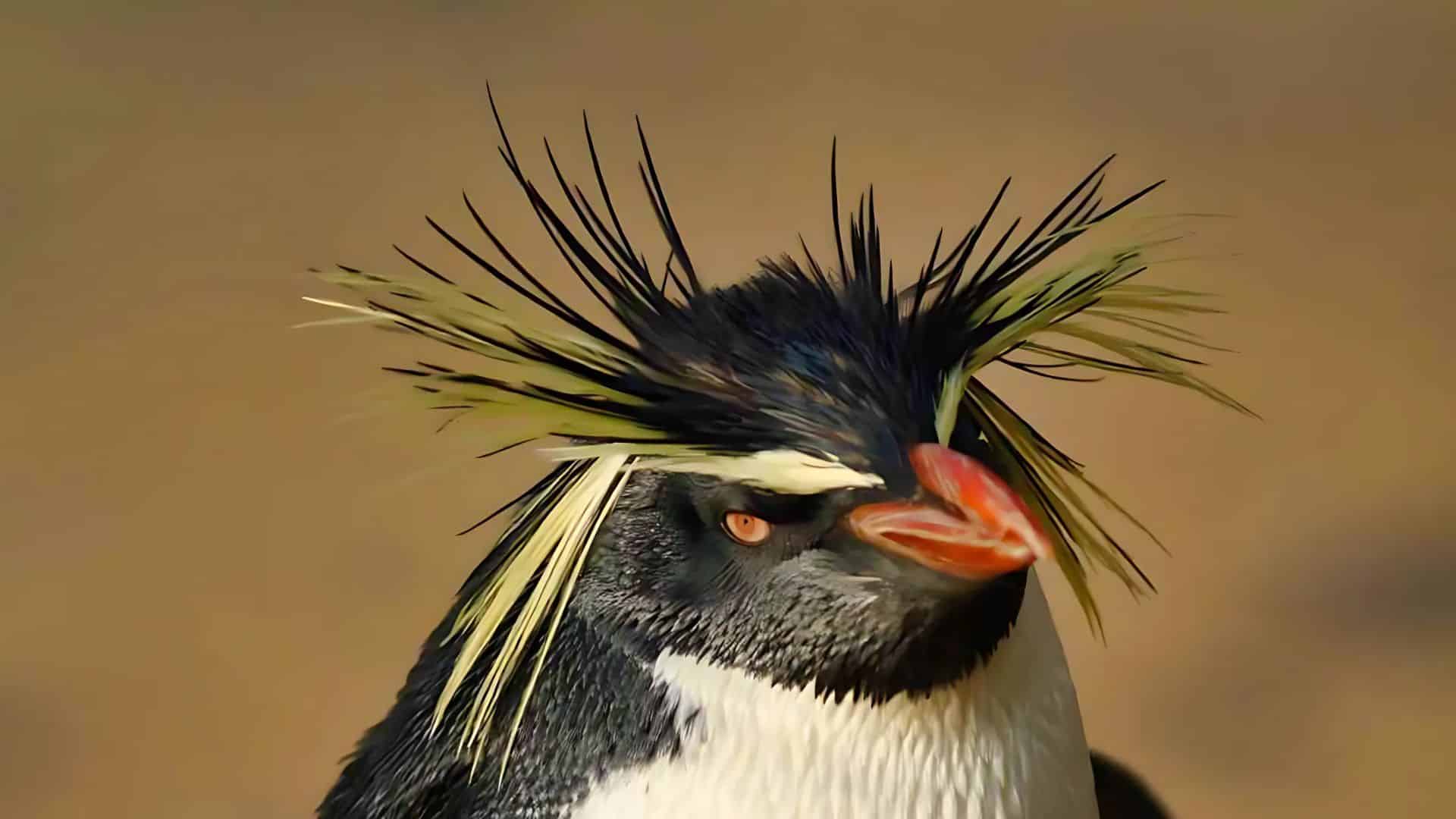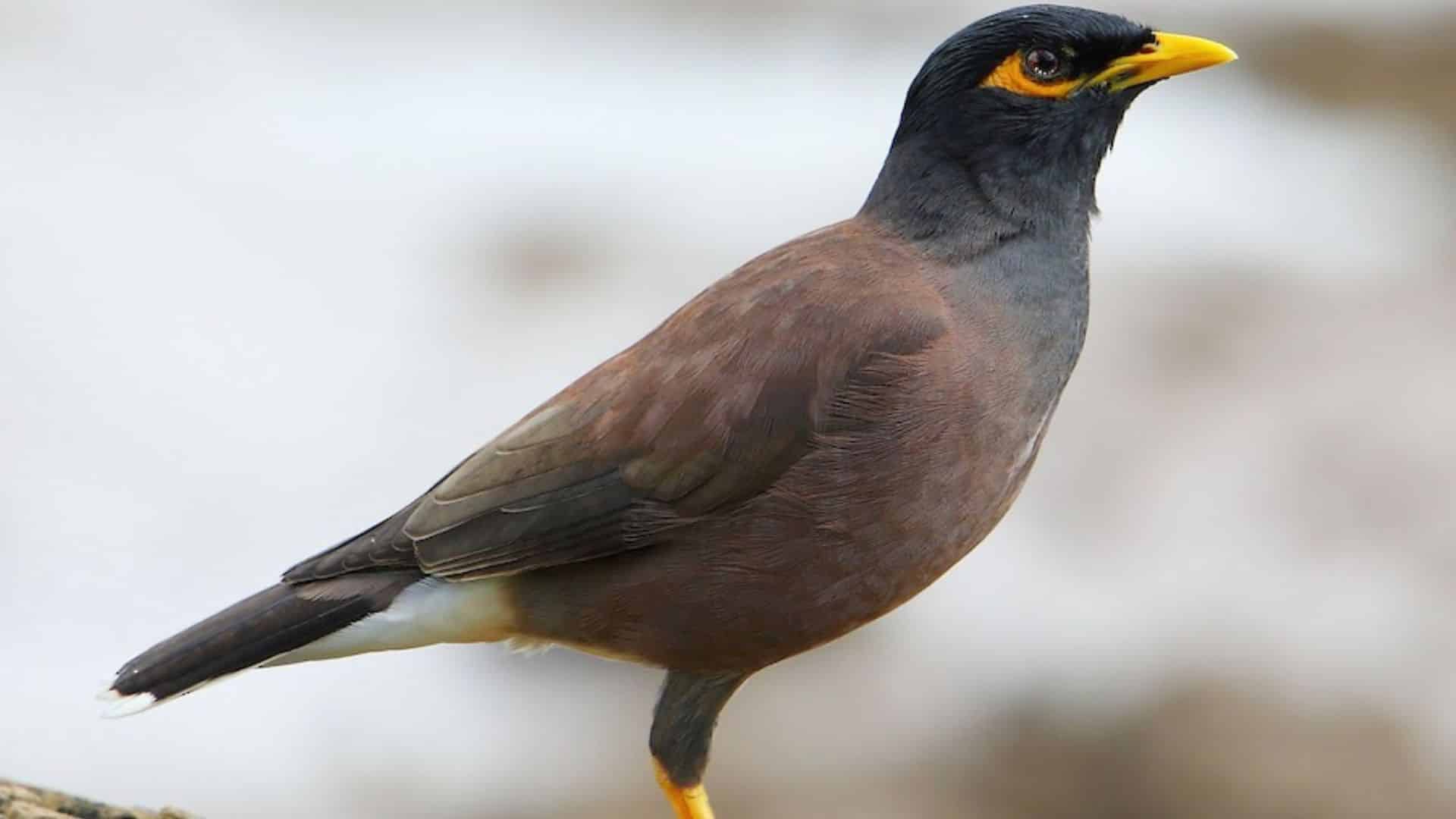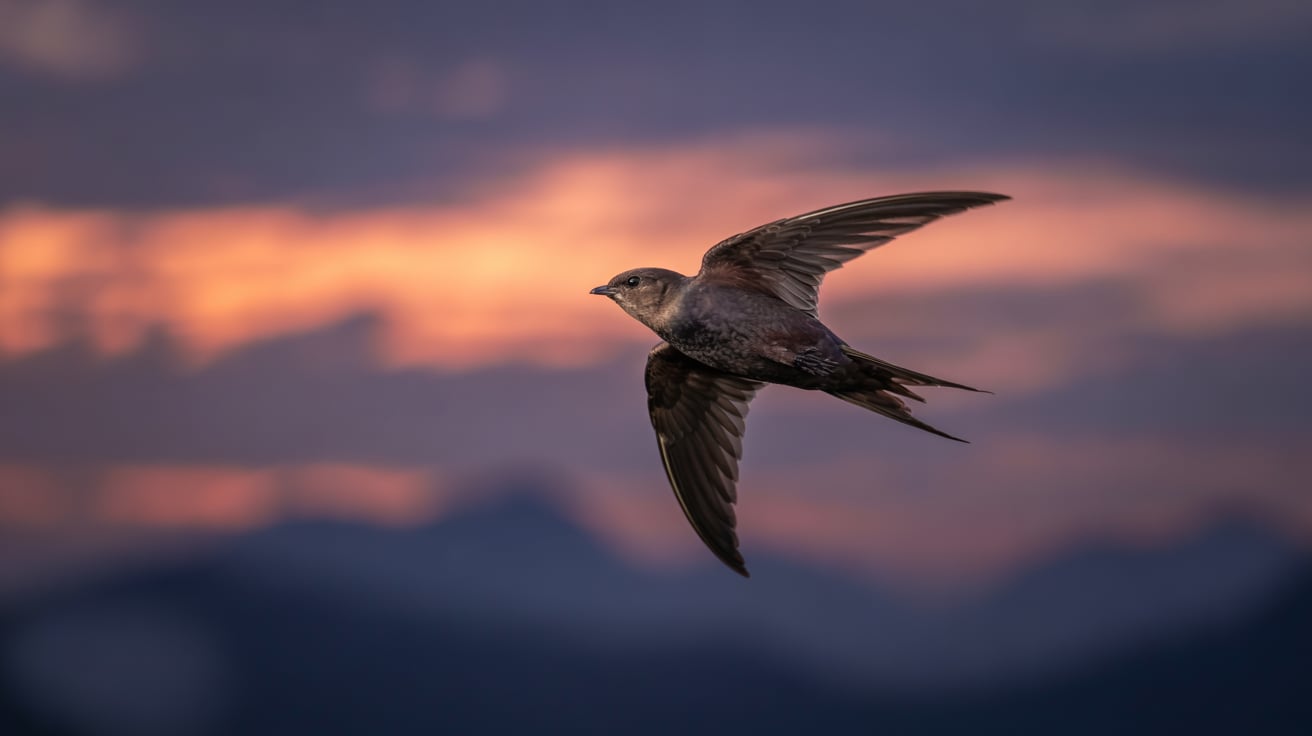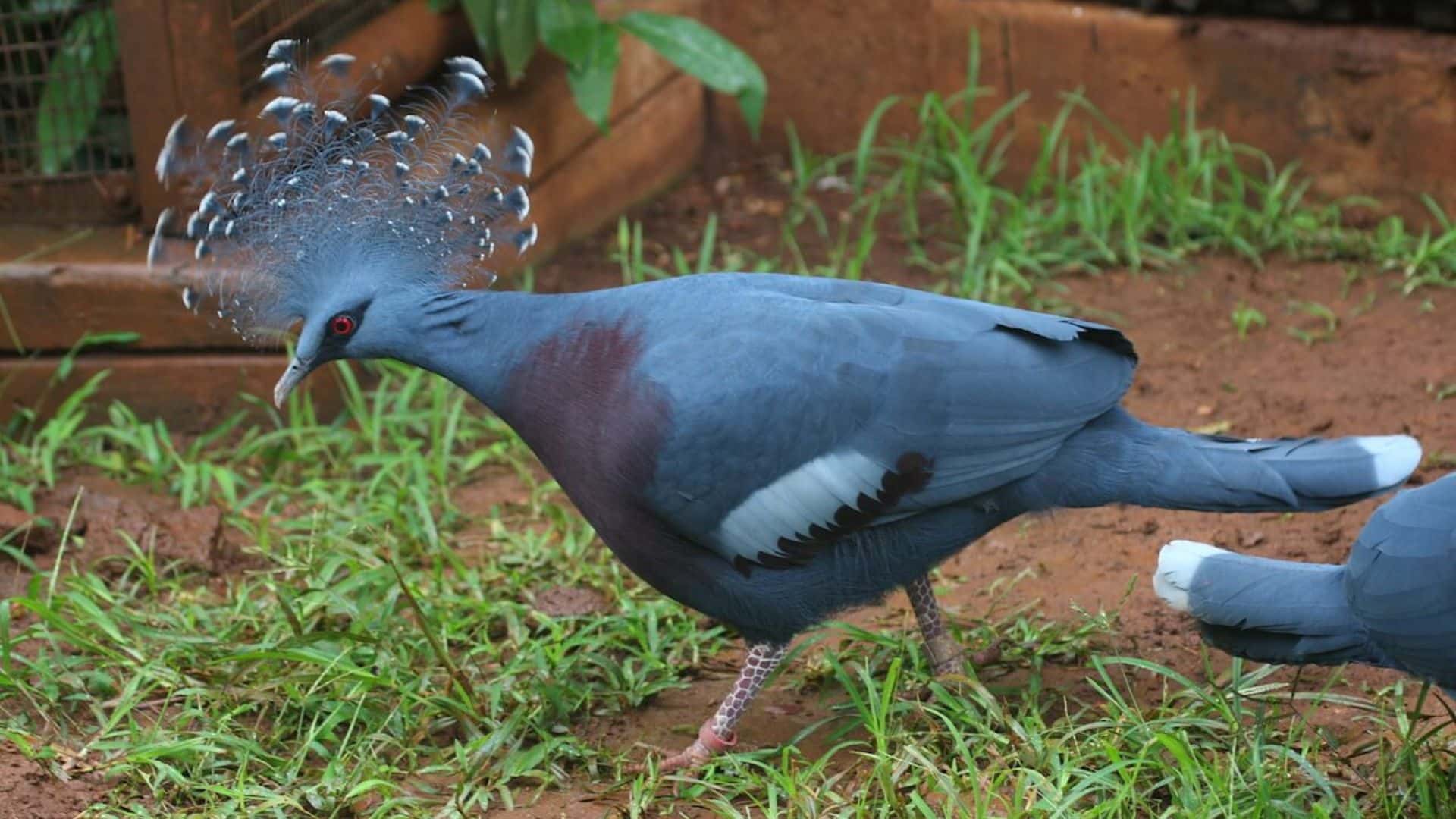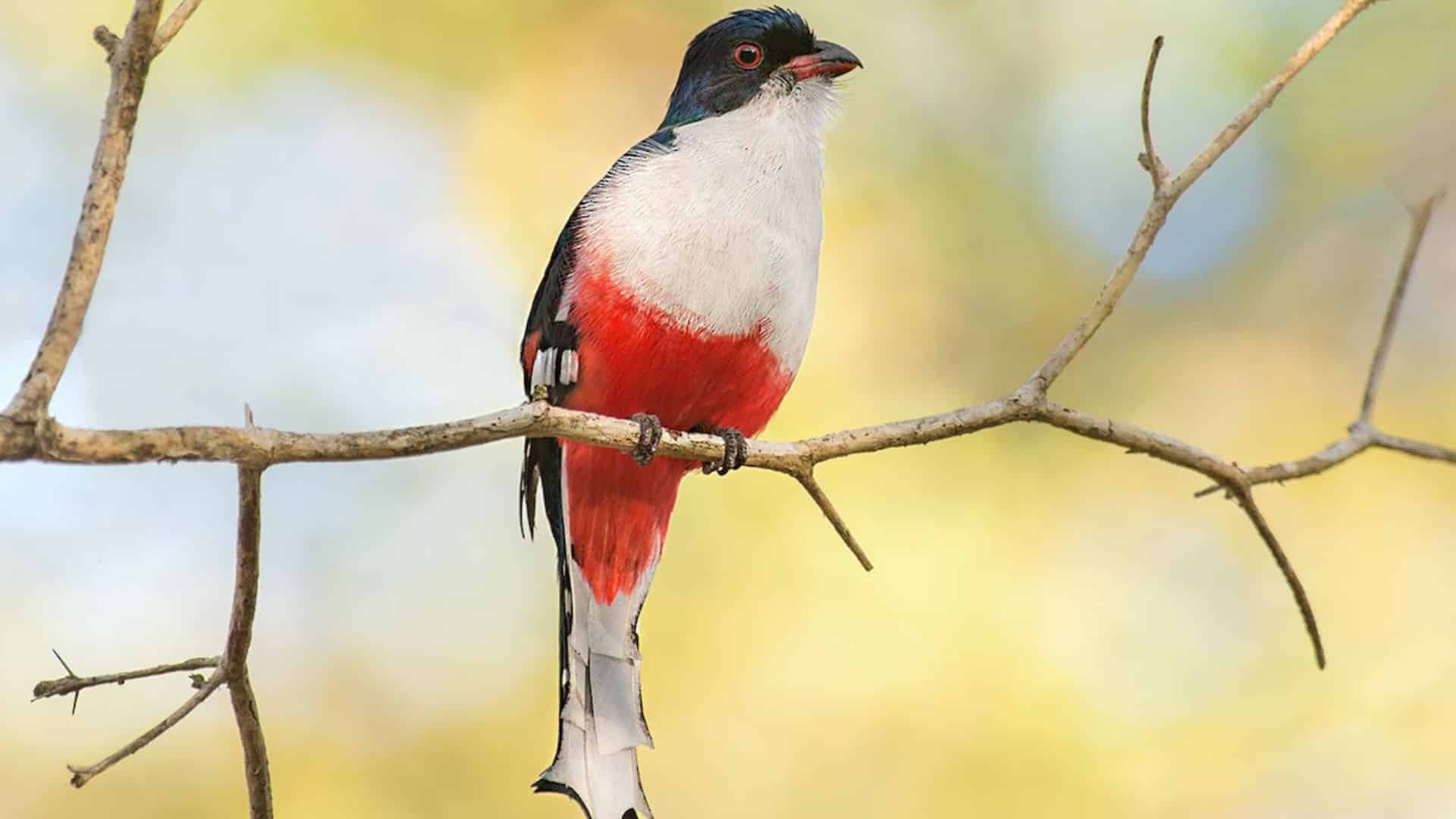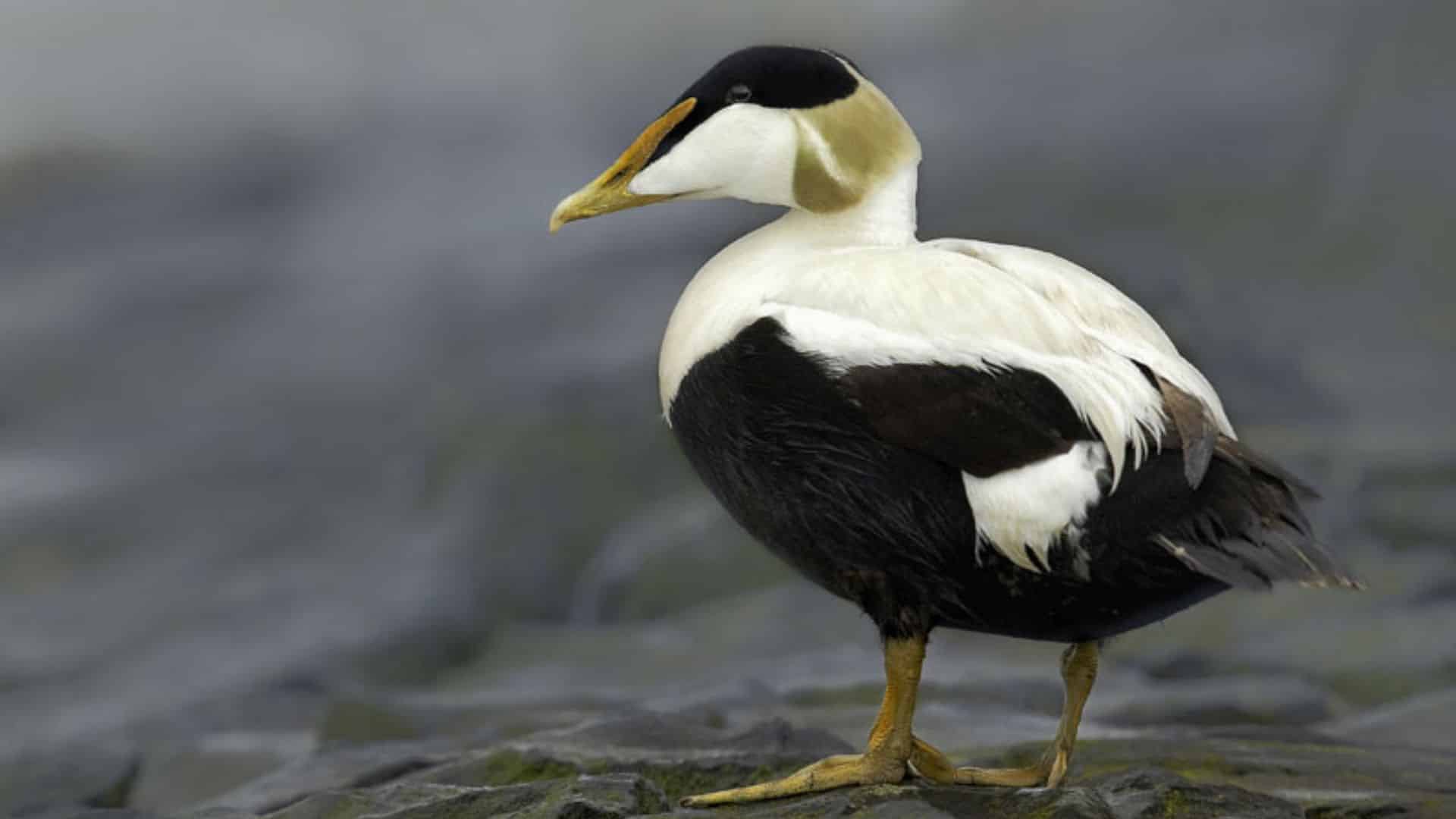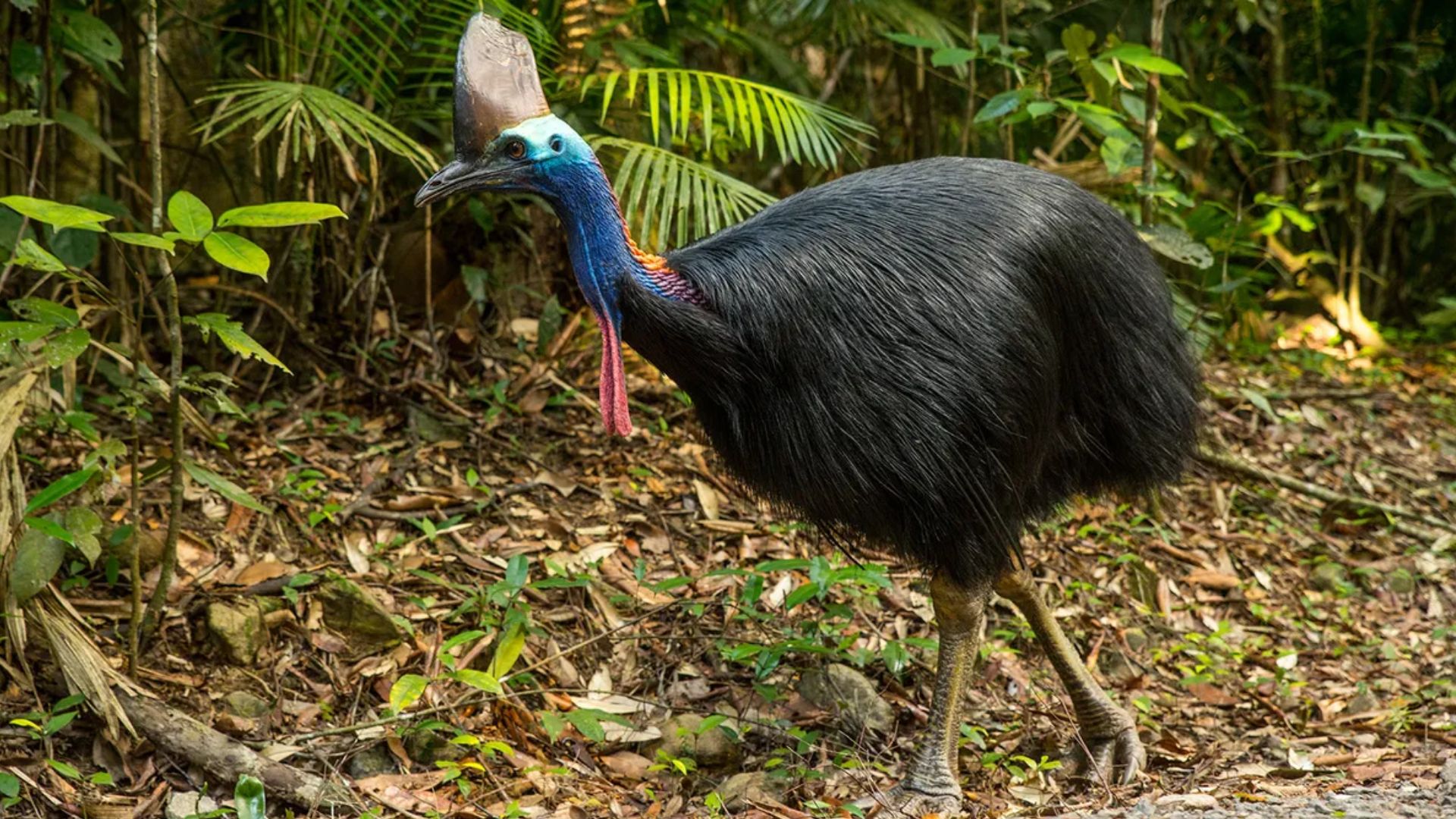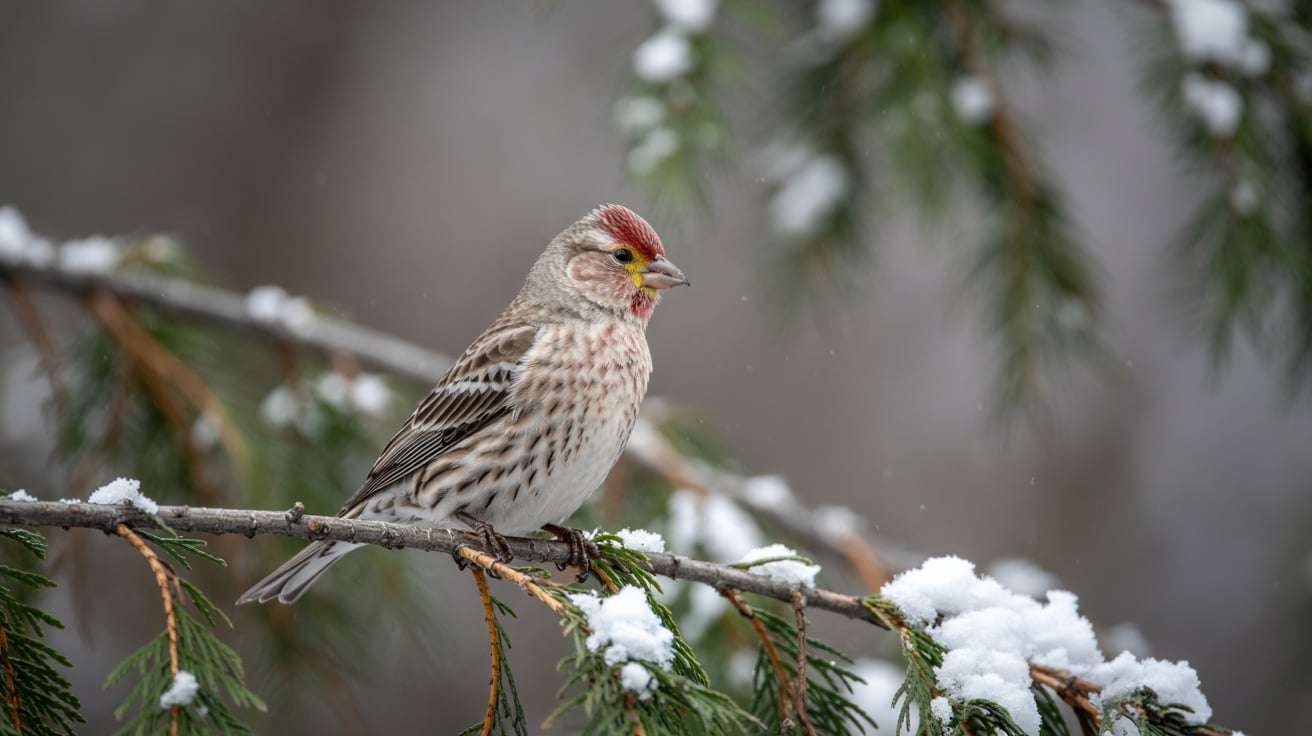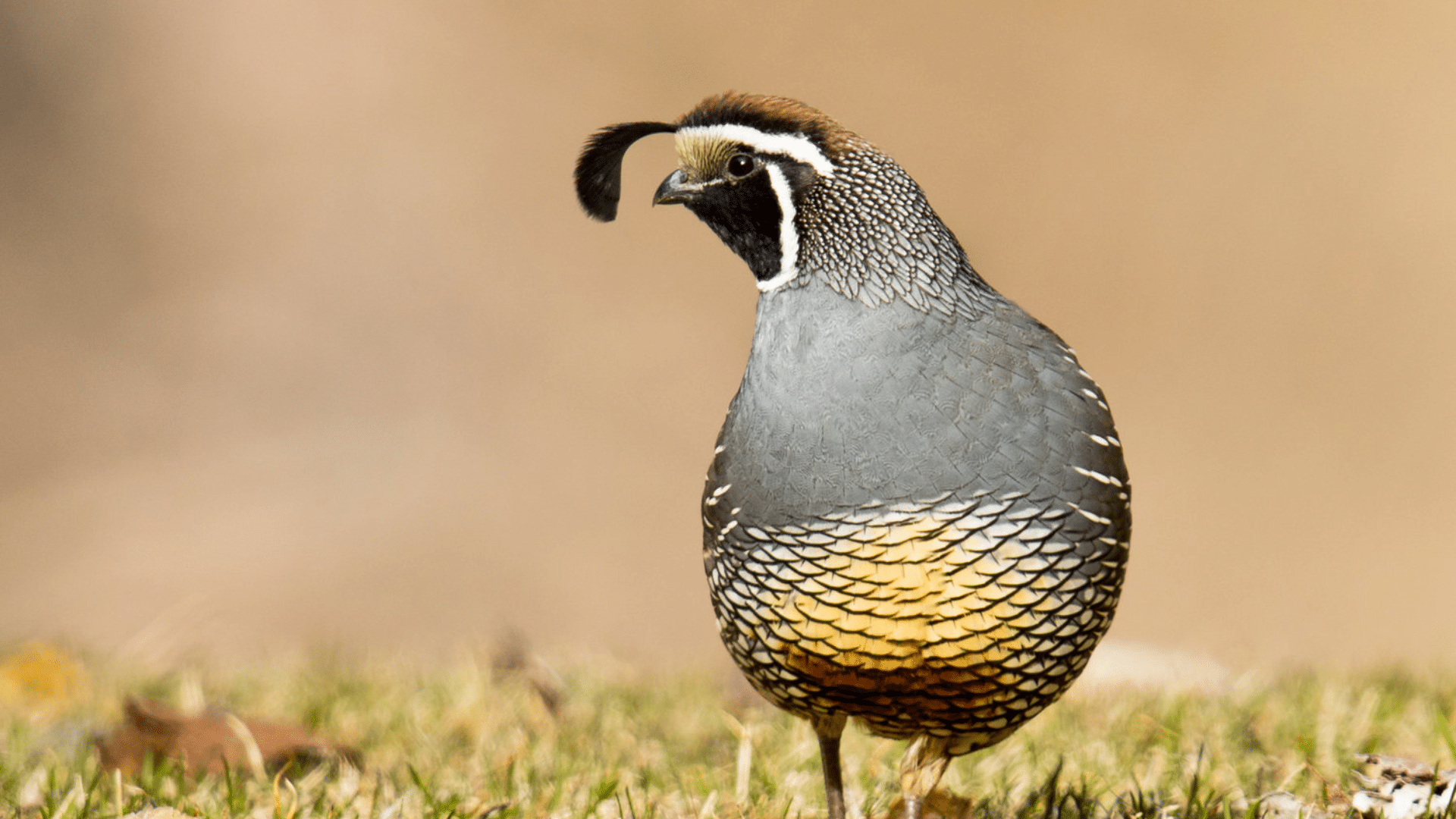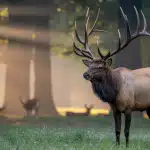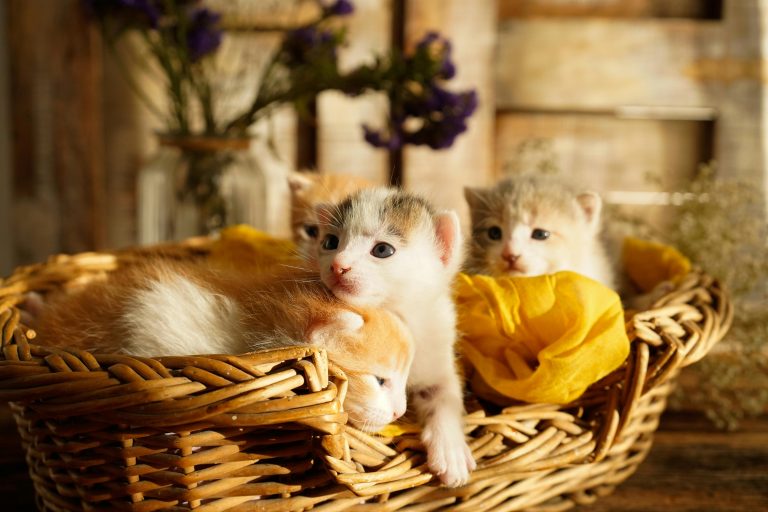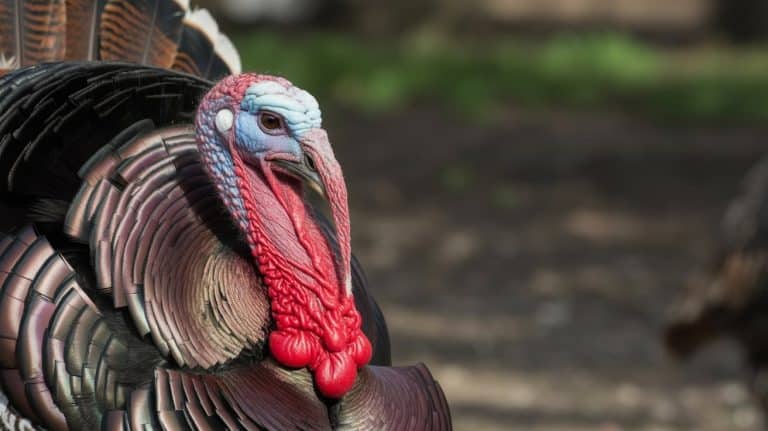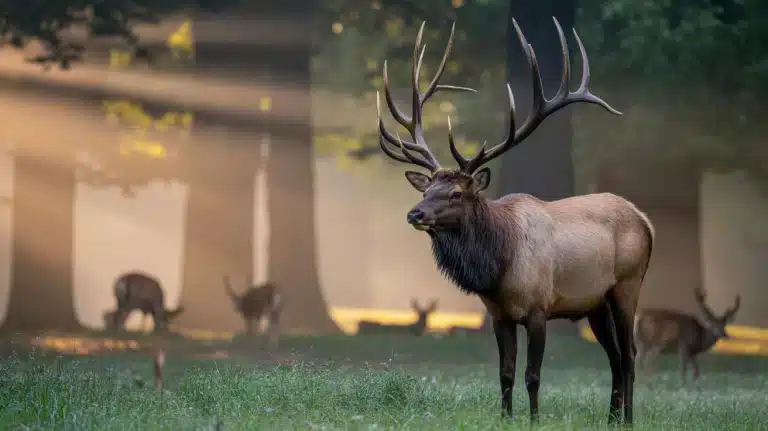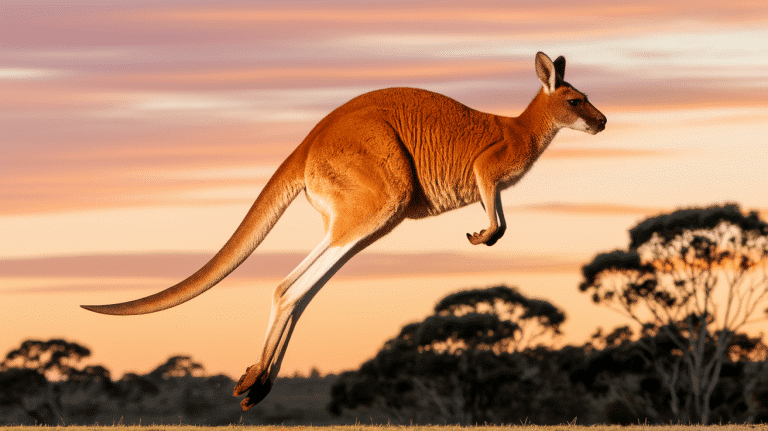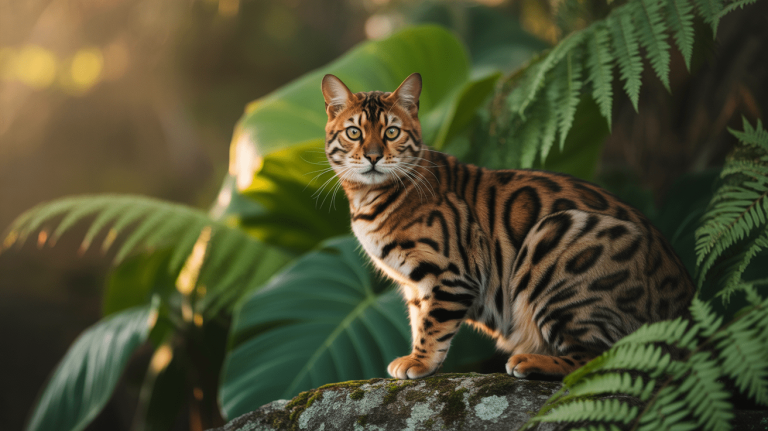The animal kingdom is characterized by incredible diversity, ranging from tiny creatures that scurry beneath our feet to majestic beasts that roam the wild.
This guide will go through a diverse range of animals, starting with the letter C, and highlight both well-known favorites and lesser-known gems that may be new to you.
Along the way, we’ll share fun facts that reveal just how amazing these creatures truly are, like which animal can change color in seconds or which one can leap 10 feet into the air!
Let’s get started and meet the charming, curious, and sometimes wild animals that make the letter C so exciting!
Why Read About Animals that Start with C?
Learning about animals that start with the letter “C” brings a fresh and exciting twist to understanding the natural world.
It turns an overwhelming amount of information into something simple and enjoyable.
-
Boosts Memory Skills: Grouping animals by their first letter helps the brain create strong memory connections, making it easier to remember facts about each creature.
-
Enhances Animal Knowledge: Instead of memorizing random names, you learn about animals through a unique pattern that highlights their features, habitats, and fun traits.
-
Makes Learning Fun and Structured: Both kids and adults enjoy alphabetical challenges. It’s a playful, engaging way to categorize and discover new animals without feeling overwhelmed.
-
Uncovers Hidden Creatures: Famous animals like cheetahs are easy to spot, but this method also introduces you to rare gems like the cuscus and coati.
Mammals That Start With C
These warm-blooded creatures inhabit land, water, and even underground environments, each bringing a unique charm and a distinct set of survival skills.
In this section, you’ll meet clever canines, curious rodents, and some truly extraordinary wild cats.
1. Cheetah
The cheetah is renowned as the fastest land animal, capable of sprinting across open plains with unmatched speed. Its lean body and distinctive black spots help it blend into the tall grass during hunts.
- Origin: Africa and parts of Iran
- Habitat: Grasslands, savannas, and open forests
- Scientific Name:Acinonyx jubatus
- Fun Fact: Cheetahs can accelerate from 0 to 60 mph in just 3 seconds!
2. Camel
Camels are remarkable desert animals known for their ability to survive long periods without water. Their humps store fat, providing energy when food and water are scarce.
-
Origin: Middle East, North Africa, Central Asia
-
Habitat: Deserts and arid regions
-
Scientific Name:Camelus
-
Fun Fact: A camel can drink up to 40 gallons of water in one go!
3. Capybara
The capybara holds the title of the world’s largest rodent. These social animals love lounging in water and often live in large groups near rivers and lakes.
-
Origin: South America
-
Habitat: Swamps, marshes, riverbanks
-
Scientific Name:Hydrochoerus hydrochaeris
-
Fun Fact: Capybaras can stay underwater for up to five minutes to evade predators!
4. Caracal
Caracals are sleek wild cats with distinctive, long, black ear tufts. They are known for their incredible jumping ability, which allows them to snatch birds right out of the air.
-
Origin: Africa, the Middle East, Central Asia, India
-
Habitat: Dry savannas, deserts, scrub forests
-
Scientific Name:Caracal caracal
-
Fun Fact: Caracals can leap 10 feet into the air vertically!
5. Chinchilla
Chinchillas are small, adorable rodents famous for their ultra-soft fur, which is the densest of any land mammal. They are playful, agile, and mostly active during dusk and dawn.
-
Origin: Andes Mountains, South America
-
Habitat: Rocky, arid regions at high elevations
-
Scientific Name:Chinchilla lanigera and Chinchilla chinchilla
-
Fun Fact: A chinchilla’s fur is so dense that fleas can’t live in it!
6. Common Dolphin
The common dolphin is a playful and highly social marine mammal. It is often seen leaping out of the water and riding the waves created by boats.
-
Origin: Warm and temperate seas worldwide
-
Habitat: Coastal and offshore waters
-
Scientific Name:Delphinus delphis
-
Fun Fact: Groups of dolphins can number in the hundreds, called “superpods”!
7. Coati
Coatis are curious, raccoon-like mammals characterized by their long noses and ringed tails. They are excellent climbers and forage for insects and fruit.
-
Origin: Central and South America
-
Habitat: Forests, woodlands, and grasslands
-
Scientific Name:Nasua nasua and Nasua narica
-
Fun Fact: Coatis can rotate their ankles to descend trees headfirst!
8. Common Wombat
The common wombat is a sturdy, burrowing marsupial that loves digging complex tunnel systems. It has strong claws and powerful limbs built for underground life.
-
Origin: Australia
-
Habitat: Forests, mountainous regions, heathlands
-
Scientific Name:Vombatus ursinus
-
Fun Fact: A wombat’s pouch faces backward to prevent dirt from getting in while digging!
9. Collared Peccary
Also known as javelinas, collared peccaries are medium-sized mammals that resemble wild pigs. They travel in herds and communicate with one another using grunts and squeals.
-
Origin: Southwestern United States to South America
-
Habitat: Deserts, shrublands, and tropical forests
-
Scientific Name:Pecari tajacu
-
Fun Fact: Despite their pig-like appearance, peccaries belong to a different animal family!
10. Crab-Eating Fox
The crab-eating fox is a medium-sized, omnivorous canine that thrives in forests and savannas. Its name comes from its fondness for crustaceans, although it eats a wide range of food.
-
Origin: Central and South America
-
Habitat: Forests, grasslands, wetlands
-
Scientific Name:Cerdocyon thous
-
Fun Fact: These foxes are excellent swimmers and often hunt along riverbanks!
11. Crab-Eating Raccoon
Similar to the North American raccoon, this species is adapted to a more aquatic lifestyle, often seen hunting along riverbanks and mangroves.
-
Origin: Central and South America
-
Habitat: Wetlands, coastal areas, forests
-
Scientific Name:Procyon cancrivorus
-
Fun Fact: Despite the name, they eat more fruits and insects than crabs!
12. Caucasian Shepherd Dog
The Caucasian Shepherd Dog is a large, fearless livestock guardian, originally bred to protect sheep from predators such as wolves and bears.
-
Origin: Caucasus Mountains
-
Habitat: Domestic (farmlands and rural areas)
-
Scientific Name:Canis lupus familiaris (dog subspecies)
-
Fun Fact: These dogs can weigh over 170 pounds!
13. Cavalier King Charles Spaniel
This small, affectionate dog breed is beloved for its gentle nature and elegant appearance, often regarded as the perfect lap dog.
-
Origin: United Kingdom
-
Habitat: Domestic (household pet)
-
Scientific Name:Canis lupus familiaris
-
Fun Fact: They are named after King Charles II of England!
14. Chow Chow
Chow Chows are unique dogs with a teddy-bear appearance, a fluffy mane, and a famously blue-black tongue. They are dignified, independent, and very loyal.
-
Origin: China
-
Habitat: Domestic (household pet)
-
Scientific Name:Canis lupus familiaris
-
Fun Fact: Chow Chows were originally bred for hunting and guarding temples!
15. Canadian Lynx
The Canadian lynx is a medium-sized wild cat specialized for life in the snow. It has thick fur and huge paws that act like natural snowshoes.
-
Origin: North America
-
Habitat: Boreal forests, snowy regions
-
Scientific Name:Lynx canadensis
-
Fun Fact: Canadian lynxes almost exclusively hunt snowshoe hares!
16. Crested Porcupine
Although better known for its spiny coat, the crested porcupine deserves a spot here because it sports a “crest” of longer quills down its neck and back.
-
Origin: Italy, North Africa, sub-Saharan Africa
-
Habitat: Forests, scrublands, rocky hills
-
Scientific Name:Hystrix cristata
-
Fun Fact: When threatened, it stamps its feet loudly before charging backwards into predators!
Birds That Start With C
Birds beginning with C are as colorful and varied as nature itself. From cliff-hugging swallows to crested pigeons with royal flair, these feathered friends impress with their songs, flights, and fascinating behaviors.
17. Canada Goose
The Canada Goose is a large, easily recognizable bird known for its black head and neck and loud honking sounds. These geese are highly adaptable and migrate in impressive V-formations.
-
Origin: North America
-
Habitat: Lakes, ponds, marshes, grassy fields
-
Scientific Name:Branta canadensis
-
Fun Fact: Canada Geese are known to return to the same nesting site every year!
18. Chinstrap Penguin
Named for the distinctive black line under its head that resembles a helmet strap, the chinstrap penguin is one of the boldest and most energetic penguin species.
-
Origin: Antarctic and sub-Antarctic islands
-
Habitat: Rocky beaches and coastal cliffs
-
Scientific Name:Pygoscelis antarcticus
-
Fun Fact: Chinstrap penguins are sometimes called “stonecracker penguins” for their loud, harsh call!
19. Crested Penguin
Crested penguins are distinguished by their striking yellow crests of feathers above their eyes, which give them a flashy appearance among their penguin relatives.
-
Origin: Southern Hemisphere islands
-
Habitat: Rocky coastlines and forests
-
Scientific Name:Eudyptes species (multiple types, including Fiordland and Snares crested penguins)
-
Fun Fact: Crested penguins often form long-term monogamous relationships!
20. Common Buzzard
The common buzzard is a medium-sized raptor characterized by broad wings and exceptional soaring abilities. Their calls often echo through European countryside landscapes.
-
Origin: Europe and parts of Asia
-
Habitat: Woodlands, grasslands, farmland
-
Scientific Name:Buteo buteo
-
Fun Fact: They have highly variable plumage, making individuals look very different from one another!
21. Crested Caracara
The crested caracara is a striking bird of prey characterized by its bold, upright posture. It often scavenges but also hunts live prey, utilizing sharp eyesight and powerful legs.
-
Origin: Southern United States through Central and South America
-
Habitat: Open fields, savannas, deserts
-
Scientific Name:Caracara cheriway
-
Fun Fact: Crested caracaras are sometimes nicknamed the “Mexican eagle.”
22. Common Myna
The common myna is a highly intelligent and noisy bird that thrives in urban environments. It’s well-known for its ability to mimic human speech.
-
Origin: South Asia
-
Habitat: Cities, parks, farmland, forests
-
Scientific Name:Acridotheres tristis
-
Fun Fact: Invasive populations of common mynas have become a major problem in Australia!
23. Common Swift
The common swift is a master of the skies, capable of spending months flying without touching down, even sleeping mid-air.
-
Origin: Europe and Asia
-
Habitat: Open skies, cliffs, urban areas
-
Scientific Name:Apus apus
-
Fun Fact: Common swifts are known to fly non-stop for up to 10 months!
24. Crowned Pigeon
The crowned pigeon is the largest species of pigeon, distinguished by a stunning, lace-like crest of feathers on its head.
-
Origin: New Guinea
-
Habitat: Lowland forests
-
Scientific Name:Goura species (includes Victoria crowned pigeon, western crowned pigeon, etc.)
-
Fun Fact: Crowned pigeons can weigh up to 5 pounds, making them unusually large for pigeons!
25. Cuban Trogon
The Cuban trogon, known as the national bird of Cuba, dazzles with its colorful plumage of red, blue, and white, mirroring the Cuban flag.
-
Origin: Cuba
-
Habitat: Forests, woodlands, plantations
-
Scientific Name:Priotelus temnurus
-
Fun Fact: It’s one of the few trogon species capable of living in disturbed habitats!
26. Congo Peafowl
The Congo peafowl is a rare, shy bird known for its shimmering blue-green plumage, which resembles a mix of a peacock and a turkey.
-
Origin: Democratic Republic of Congo
-
Habitat: Rainforests
-
Scientific Name:Afropavo congensis
-
Fun Fact: It is the only true peafowl native to Africa!
27. Common Eider
The common eider is a large sea duck famous for producing eiderdown, the softest and warmest natural insulating material in the world.
-
Origin: Arctic and northern coastal regions
-
Habitat: Coastal marine environments
-
Scientific Name:Somateria mollissima
-
Fun Fact: Female eiders pluck their breast feathers to line their nests!
28. Cassowary
Cassowaries are large, flightless birds with powerful legs and a horn-like casque on their heads. They are considered one of the most dangerous birds in the world.
- Origin: Australia, New Guinea
- Habitat: Tropical rainforests
- Scientific Name:Casuarius species
- Fun Fact: Cassowaries can reach speeds of up to 30 miles per hour and jump as high as 5 feet in the air!
29. Cassin’s Finch
Cassin’s finch is a small songbird known for its sweet melodies and pinkish-red coloring in males, often found in high-altitude forests.
-
Origin: Western North America
-
Habitat: Coniferous forests
-
Scientific Name:Haemorhous cassinii
-
Fun Fact: The bird’s color deepens during breeding season to attract mates!
30. California Quail
The California quail is a charming, plump bird with a forward-drooping black plume on its head. It’s the official state bird of California.
-
Origin: Western United States
-
Habitat: Chaparral, woodlands, suburban gardens
-
Scientific Name:Callipepla californica
-
Fun Fact: California quails are highly social and often move in groups called “coveys.”
Reptiles and Amphibians That Start With C
Slithering, crawling, and leaping into view, reptiles and amphibians with names that start with C are anything but ordinary.
From venomous cobras to rock-hugging chuckwallas, these cold-blooded creatures thrive in deserts, forests, and wetlands. Some are silent stalkers, while others dazzle with colors and survival tricks.
31. Cobra
Cobras are famous for their venomous nature and dramatic hood displays when threatened. With their upright posture and menacing hiss, they are some of the most recognizable snakes in the world.
-
Origin: Africa and Asia
-
Habitat: Forests, savannas, grasslands
-
Scientific Name:Naja species (includes Indian cobra, king cobra, etc.)
-
Fun Fact: The king cobra can deliver enough venom in one bite to kill an elephant!
32. Crocodile
Crocodiles are large aquatic reptiles characterized by their armored bodies and fearsome jaws. They are ancient predators, virtually unchanged for millions of years.
-
Origin: Africa, Asia, Australia, the Americas
-
Habitat: Rivers, lakes, wetlands, coastal regions
-
Scientific Name:Crocodylidae family (many species)
-
Fun Fact: Crocodiles can live more than 70 years and can leap straight out of the water!
33. Crested Gecko
Crested geckos were once thought extinct but were rediscovered in New Caledonia. They are popular pets due to their distinctive “eyelash” crests and ease of care.
-
Origin: New Caledonia (South Pacific)
-
Habitat: Rainforests
-
Scientific Name:Correlophus ciliatus
-
Fun Fact: Crested geckos can drop their tails if threatened — but they don’t grow back!
34. Chinese Water Dragon
Chinese water dragons are beautiful, bright green reptiles that love lounging near water sources. Their calm nature makes them popular among reptile enthusiasts.
-
Origin: Southeast Asia (China, Thailand, Vietnam)
-
Habitat: Forests near rivers and lakes
-
Scientific Name:Physignathus cocincinus
-
Fun Fact: They can stay underwater for up to 25 minutes!
35. Coastal Taipan
The coastal taipan is among the world’s most venomous snakes. Despite its deadly bite, it prefers to avoid humans and slinks away when disturbed.
-
Origin: Northern and eastern Australia, New Guinea
-
Habitat: Coastal forests, grasslands, sugarcane fields
-
Scientific Name:Oxyuranus scutellatus
-
Fun Fact: A coastal taipan can grow up to 10 feet long!
36. Chinese Softshell Turtle
The Chinese softshell turtle is recognized for its leathery, flexible shell and its long, snorkel-like snout. It’s a strong swimmer and often buries itself in sandy riverbeds.
-
Origin: China, Japan, Korea, Vietnam
-
Habitat: Rivers, lakes, ponds
-
Scientific Name:Pelodiscus sinensis
-
Fun Fact: They can “breathe” underwater by absorbing oxygen through their skin and throat lining!
37. California Kingsnake
California kingsnakes are famous for their beautiful black-and-white or brown-and-cream banding patterns. They are non-venomous and often kept as calm, hardy pets.
-
Origin: Western United States and northern Mexico
-
Habitat: Deserts, grasslands, forests
-
Scientific Name:Lampropeltis californiae
-
Fun Fact: Kingsnakes are immune to rattlesnake venom and will eat venomous snakes!
38. Chuckwalla
Chuckwallas are large, thick-bodied lizards known for inflating their bodies to wedge themselves tightly into rock crevices when threatened.
-
Origin: Southwestern United States, northern Mexico
-
Habitat: Rocky deserts
-
Scientific Name:Sauromalus species
-
Fun Fact: Chuckwallas are herbivores, primarily feeding on desert plants and flowers.
39. Colorado River Toad
Also known as the Sonoran Desert toad, this toad is the largest native to the United States and is infamous for its toxic secretions.
-
Origin: Southwestern United States, northern Mexico
-
Habitat: Deserts, grasslands near water sources
-
Scientific Name:Incilius alvarius
-
Fun Fact: Its skin toxins can be harmful to predators and even curious pets!
40. Common Iguana (Green Iguana)
The common iguana, also known as the green iguana, is a tree-dwelling reptile characterized by a powerful tail and impressive climbing abilities.
-
Origin: Central and South America
-
Habitat: Rainforests, riverbanks, urban areas
-
Scientific Name:Iguana iguana
-
Fun Fact: Iguanas can survive falls from heights of 50 feet without injury!
Aquatic Animals That Start With C
Beneath the waves and among the reefs, aquatic animals that start with C bring their magic to marine and freshwater worlds.
From clever clownfish to powerful Caribbean reef sharks, these species play vital roles in ocean ecosystems, and many are just as beautiful as they are fascinating.
41. Crab
Crabs are crustaceans known for their tough exoskeletons and their sideways walking motion. Found across oceans, freshwater, and land, they play an important role in many ecosystems.
-
Origin: Worldwide (oceans, rivers, and land areas)
-
Habitat: Beaches, seabeds, riverbanks, mangroves
-
Scientific Name:Brachyura (infraorder)
-
Fun Fact: The Japanese spider crab can have a leg span of up to 12 feet!
42. Clownfish
Clownfish, with their bright orange bodies and white stripes, are famous for their symbiotic relationships with sea anemones, which protect them from predators.
-
Origin: Indo-Pacific region
-
Habitat: Warm shallow seas, coral reefs
-
Scientific Name:Amphiprioninae (subfamily)
-
Fun Fact: All clownfish are born male — some change to female as they mature!
43. Coral
Coral is a fascinating marine organism that builds the massive structures known as coral reefs, supporting countless species of aquatic life.
-
Origin: Tropical and subtropical oceans
-
Habitat: Coral reefs, shallow warm waters
-
Scientific Name:Anthozoa (class)
-
Fun Fact: Coral reefs cover less than 1% of the ocean but support 25% of marine species!
44. Cuttlefish
Cuttlefish are intelligent marine animals related to squids and octopuses. They are masters of camouflage, instantly changing color and texture to blend into their surroundings.
-
Origin: Worldwide, mostly shallow tropical and temperate seas
-
Habitat: Coastal waters, coral reefs, seagrass beds
-
Scientific Name:Sepiida (order)
-
Fun Fact: Cuttlefish have three hearts and blue-green blood!
45. Caribbean Reef Shark
The Caribbean reef shark is a sleek predator often seen gliding through tropical waters. It plays a crucial role in reef ecosystems.
-
Origin: Caribbean Sea, Western Atlantic
-
Habitat: Coral reefs, coastal waters
-
Scientific Name:Carcharhinus perezi
-
Fun Fact: These sharks often patrol the same hunting routes daily!
46. Codfish
Codfish are important commercially and culturally, valued for their tasty meat. They inhabit the colder regions of the Atlantic and Pacific Oceans.
-
Origin: North Atlantic and Pacific Oceans
-
Habitat: Cold, deep waters; continental shelves
-
Scientific Name:Gadus species
-
Fun Fact: Cod liver oil is packed with vitamins A and D!
47. Clam
Clams are soft-bodied mollusks protected by a two-part shell. They burrow into sand or mud, filtering water for plankton and nutrients.
-
Origin: Worldwide (oceans, rivers, freshwater lakes)
-
Habitat: Seabeds, muddy river bottoms
-
Scientific Name:Bivalvia (class)
-
Fun Fact: Some clams can live over 500 years — like the famous “Ming” clam!
48. Coral Trout
The coral trout is a colorful fish species often found among coral reefs. It’s a popular target for anglers due to its beautiful appearance and tasty flesh.
-
Origin: Indo-Pacific region
-
Habitat: Coral reefs
-
Scientific Name:Plectropomus leopardus
-
Fun Fact: Coral trout can change color based on their mood and surroundings!
49. Crayfish
Also known as crawfish or crawdads, crayfish resemble mini-lobsters and inhabit freshwater environments, often hiding under rocks and logs.
-
Origin: Worldwide (especially North America, Australia, and Europe)
-
Habitat: Freshwater rivers, streams, ponds
-
Scientific Name:Astacoidea and Parastacoidea (superfamilies)
-
Fun Fact: Crayfish can regenerate lost limbs over time!
50. Coconut Crab
The coconut crab is the world’s largest terrestrial arthropod, and its powerful claws allow it to crack open coconuts.
-
Origin: Indo-Pacific islands
-
Habitat: Coastal forests, beaches
-
Scientific Name:Birgus latro
-
Fun Fact: Coconut crabs can climb trees and lift objects weighing up to 60 pounds!
Insects and Small Creatures That Start With C
Tiny but mighty, insects and small creatures with names starting with C make up a world buzzing with energy.
From web-spinning spiders to buzzing beetles and fluttering moths, these animals play crucial roles in pollination, decomposition, and more. You might be surprised by how much impact these small beings have.
51. Carpenter Ant
Carpenter ants are large black ants famous for tunneling into wood to build their nests, although they don’t actually eat the wood.
-
Origin: Worldwide (especially forests)
-
Habitat: Dead trees, wooden structures, moist environments
-
Scientific Name:Camponotus species
-
Fun Fact: Carpenter ants can destroy wood structures if left unchecked!
52. Cricket
Crickets are insects known for their musical chirping, which males produce by rubbing their wings together to attract females.
-
Origin: Worldwide
-
Habitat: Grasslands, forests, caves, and near homes
-
Scientific Name:Gryllidae (family)
-
Fun Fact: The temperature outside can be estimated by counting cricket chirps!
53. Chocolate Chip Starfish
The chocolate chip starfish gets its name from the dark spots across its body, which resemble chocolate chips.
-
Origin: Indo-Pacific oceans
-
Habitat: Coral reefs, sandy seabeds
-
Scientific Name:Protoreaster nodosus
-
Fun Fact: Despite their appearance, those “chocolate chips” are defensive spines!
54. Comet Moth
The comet moth is one of the largest silk moths. It is known for its long tail, vibrant yellow color, and eye spots on its wings.
-
Origin: Madagascar
-
Habitat: Rainforests
-
Scientific Name:Argema mittrei
-
Fun Fact: Even though adults are stunning, they live for only 4–5 days!
55. Carpenter Bee
Carpenter bees are often mistaken for bumblebees but can be recognized by their shiny, hairless abdomens. They bore holes into wood to lay their eggs.
-
Origin: Worldwide
-
Habitat: Forests, gardens, wooden structures
-
Scientific Name:Xylocopa species
-
Fun Fact: Only female carpenter bees can sting, and they rarely do unless provoked!
56. Colorado Potato Beetle
These striking yellow-and-black striped beetles are infamous pests for potato crops and other plants in the nightshade family.
-
Origin: North America
-
Habitat: Fields, gardens
-
Scientific Name:Leptinotarsa decemlineata
-
Fun Fact: These beetles can quickly develop resistance to pesticides!
57. Cactus Mouse
The cactus mouse is a small, desert-dwelling rodent with large eyes and ears, adapted for nighttime activity to avoid the desert heat.
-
Origin: Southwestern United States and Mexico
-
Habitat: Desert scrub, rocky hillsides
-
Scientific Name:Peromyscus eremicus
-
Fun Fact: Cactus mice can survive without drinking free water, getting moisture from seeds and plants!
58. Crab Spider
Crab spiders are named for their crab-like stance and sideways walking. They are skilled ambush predators, often blending perfectly into flowers.
-
Origin: Worldwide
-
Habitat: Gardens, forests, meadows
-
Scientific Name:Thomisidae (family)
-
Fun Fact: Some crab spiders can change color to match the flower they sit on!
59. Congo Tetra
The Congo tetra is a shimmering freshwater fish with iridescent scales that flash blue, green, gold, and red when they swims.
-
Origin: Congo River Basin, Africa
-
Habitat: Freshwater rivers and streams
-
Scientific Name:Phenacogrammus interruptus
-
Fun Fact: Males develop beautiful, flowing fins as they mature!
60. Common Green Darner
The common green darner is a striking dragonfly with a bright green thorax and a powerful, darting flight.
-
Origin: North and Central America
-
Habitat: Ponds, lakes, marshes
-
Scientific Name:Anax junius
-
Fun Fact: These dragonflies migrate long distances, just like monarch butterflies!
61. Chestnut Teal
The chestnut teal is a colorful duck species recognized for its rich chestnut-colored body and iridescent green head in males.
-
Origin: Australia and Tasmania
-
Habitat: Wetlands, estuaries, lagoons
-
Scientific Name:Anas castanea
-
Fun Fact: Chestnut teals are excellent divers, feeding mostly underwater!
62. Chinese Crested Dog
The Chinese Crested Dog is a small, playful breed often either hairless with tufts of hair or covered in soft fur, known as the “powderpuff” variety.
-
Origin: China
-
Habitat: Domestic (households)
-
Scientific Name:Canis lupus familiaris
-
Fun Fact: Hairless Chinese Crested Dogs often wear sweaters to stay warm!
63. Chinese Hamster
Chinese hamsters are small rodents characterized by their long tails, distinct from other hamsters. They’re calm, gentle, and popular as pets.
-
Origin: Northern China and Mongolia
-
Habitat: Steppes, deserts
-
Scientific Name:Cricetulus griseus
-
Fun Fact: Chinese hamsters have a slight “rat-like” appearance due to their longer tails!
64. Chinese Shar-Pei
The Chinese Shar-Pei is known for its unique wrinkled skin and “hippopotamus” face, a loyal and protective dog breed.
-
Origin: China
-
Habitat: Domestic (urban and rural homes)
-
Scientific Name:Canis lupus familiaris
-
Fun Fact: Shar-Pei puppies are born extremely wrinkled but “grow into” their skin as they mature!
65. Chinese Alligator
The Chinese alligator is significantly smaller and less aggressive than its American counterpart, and it is critically endangered in the wild.
-
Origin: China (Yangtze River basin)
-
Habitat: Marshes, lakes, ponds
-
Scientific Name:Alligator sinensis
-
Fun Fact: Chinese alligators often hibernate in underground burrows during winter!
66. California Sea Lion
California sea lions are playful, intelligent marine mammals often seen “performing” tricks at aquariums, but they’re just as acrobatic in the wild.
-
Origin: Western North America
-
Habitat: Coastal beaches, rocky shores
-
Scientific Name:Zalophus californianus
-
Fun Fact: Males can grow to over 850 pounds and are called “bulls.”
67. Common Kestrel
The common kestrel is a small falcon, easily recognized by its hovering flight as it searches for small prey.
-
Origin: Europe, Asia, Africa
-
Habitat: Open fields, meadows, farmland
-
Scientific Name:Falco tinnunculus
-
Fun Fact: Kestrels can see ultraviolet light, helping them spot rodent urine trails!
68. Coral Snake
The coral snake is a highly venomous species with striking red, yellow, and black banding. Many non-venomous snakes mimic their colors!
-
Origin: Americas (Southern U.S., Central and South America)
-
Habitat: Forests, marshes, sandy areas
-
Scientific Name:Micrurus species (North American and South American groups)
-
Fun Fact: A helpful rhyme to remember them: “Red touch yellow, kill a fellow; red touch black, friend of Jack!”
69. Common Loon
The common loon is a waterbird famous for its eerie, haunting calls across northern lakes.
-
Origin: North America
-
Habitat: Freshwater lakes, coastal waters
-
Scientific Name:Gavia immer
-
Fun Fact: Loons have solid bones, making them excellent divers but awkward walkers on land!
70. Common Nightingale
The common nightingale is celebrated for its powerful, beautiful song, which is often heard at night in European woodlands.
-
Origin: Europe, parts of Asia, North Africa
-
Habitat: Forests, dense shrubbery
-
Scientific Name:Luscinia megarhynchos
-
Fun Fact: Nightingales can sing up to 250 different songs!
71. Common Shrew
The common shrew is a small, insect-eating mammal with a rapid metabolism requiring constant feeding.
-
Origin: Europe, parts of Asia
-
Habitat: Woodlands, meadows, hedgerows
-
Scientific Name:Sorex araneus
-
Fun Fact: Shrews need to eat almost their entire body weight daily!
72. Common Starling
The common starling, also known as the European starling, is famous for forming breathtaking swirling flocks called murmurations.
-
Origin: Europe, Western Asia
-
Habitat: Urban areas, farmland, forests
-
Scientific Name:Sturnus vulgaris
-
Fun Fact: They can mimic car alarms, human voices, and other birds!
73. Common Toad
The common toad is a plump amphibian with warty skin. It is secretive except during breeding season, when it becomes more active.
-
Origin: Europe
-
Habitat: Woodlands, gardens, wetlands
-
Scientific Name:Bufo bufo
-
Fun Fact: Toads can live up to 40 years in the wild!
74. Common Wallaroo
The wallaroo is a large, muscular marsupial that looks like a mix between a kangaroo and a wallaby.
-
Origin: Australia
-
Habitat: Rocky hills, grassy plains
-
Scientific Name:Macropus robustus
-
Fun Fact: Wallaroos are excellent rock climbers compared to kangaroos!
75. Common Gull
The common gull is a medium-sized seagull found mostly in the Northern Hemisphere. It is smaller than the herring gull and is often confused with it.
-
Origin: Europe, Asia, North America
-
Habitat: Coastal areas, farmland, lakeshores
-
Scientific Name:Larus canus
-
Fun Fact: Despite its name, the common gull isn’t very “common” in some areas!
76. Common Bronzewing
The common bronzewing is a ground-dwelling pigeon species, recognizable by its iridescent wing patches.
-
Origin: Australia
-
Habitat: Woodlands, scrublands
-
Scientific Name:Phaps chalcoptera
-
Fun Fact: Their call can carry up to a kilometer across the Australian bush!
77. Common Murre
The common murre is a black-and-white seabird that spends most of its life at sea, diving deep for fish.
-
Origin: North Atlantic and North Pacific Oceans
-
Habitat: Open ocean, rocky cliffs during breeding
-
Scientific Name:Uria aalge
-
Fun Fact: Murres can dive to depths of over 600 feet!
78. Common Redpoll
The common redpoll is a tiny finch with a red cap and streaky plumage that thrives even in icy Arctic conditions.
-
Origin: Northern Europe, Asia, North America
-
Habitat: Tundra, boreal forests
-
Scientific Name:Acanthis flammea
-
Fun Fact: Redpolls can tunnel under snow to stay warm overnight!
79. Common Seal (Harbor Seal)
Common seals are playful marine mammals with a wide global range, often seen lounging on rocks and beaches.
-
Origin: Northern Hemisphere (Atlantic and Pacific Oceans)
-
Habitat: Coastal waters, estuaries, beaches
-
Scientific Name:Phoca vitulina
-
Fun Fact: Each seal has a unique pattern of spots, like a fingerprint!
80. Common Sunbird
The common sunbird, related to hummingbirds, flits from flower to flower, sipping nectar with its curved beak.
-
Origin: Africa and Asia
-
Habitat: Forest edges, gardens, grasslands
-
Scientific Name:Cyanomitra or Cinnyris (multiple species)
-
Fun Fact: Sunbirds can hover like hummingbirds but prefer to perch while feeding!
More Fascinating Animals That Start With C
Beyond the better-known names, there’s a world of surprising and lesser-known animals starting with C.
These creatures include curious birds, rare amphibians, and even extinct species with fascinating stories. Each one adds another piece to the incredible puzzle of biodiversity.
81. Curlew
The curlew is a long-legged wading bird known for its distinctive down-curved bill and haunting calls that echo across wetlands.
-
Origin: Europe, Asia, North America
-
Habitat: Marshes, estuaries, grasslands
-
Scientific Name:Numenius species
-
Fun Fact: The Eurasian curlew is the largest wading bird in its range!
82. Cuckoo
Cuckoos are well-known for their unique breeding strategy: They lay their eggs in other birds’ nests for the unsuspecting foster parents to raise.
-
Origin: Worldwide (especially Europe, Africa, Asia)
-
Habitat: Woodlands, forests, open fields
-
Scientific Name:Cuculidae family
-
Fun Fact: Cuckoo chicks often push the host’s eggs or chicks out of the nest!
83. Common Frog
The common frog is a smooth-skinned amphibian famous for its incredible jumping abilities and its seasonal hibernation in mud or leaf litter.
-
Origin: Europe
-
Habitat: Ponds, marshes, meadows
-
Scientific Name:Rana temporaria
-
Fun Fact: Common frogs can survive being frozen during hibernation!
84. Curly-Coated Retriever
The curly-coated retriever is one of the oldest retriever breeds. It is recognized for its distinctive, tight, and waterproof curls and exceptional swimming abilities.
-
Origin: England
-
Habitat: Domestic (working and family dogs)
-
Scientific Name:Canis lupus familiaris
-
Fun Fact: Their curls protect them from harsh weather while retrieving game from water!.
85. Chinese Goose
Chinese geese are domesticated birds descended from wild swan geese. They are vocal and alert, often kept for both ornamental and protective purposes.
-
Origin: China
-
Habitat: Domestic farms, ponds
-
Scientific Name:Anser cygnoides domesticus
-
Fun Fact: Chinese geese have a distinctive “knob” at the base of their bill!
86. Cotton-Top Tamarin
Cotton-top tamarins are tiny New World monkeys easily recognized by the fluffy white crest of hair atop their heads.
-
Origin: Colombia (South America)
-
Habitat: Tropical forests
-
Scientific Name:Saguinus oedipus
-
Fun Fact: These tamarins are critically endangered, with only a few thousand left in the wild!
87. Costa Rican Zebra Tarantula
The Costa Rican zebra tarantula, named for the white stripes on its legs, is a striking but generally shy spider species.
-
Origin: Costa Rica, Central America
-
Habitat: Tropical forests
-
Scientific Name:Aphonopelma seemanni
-
Fun Fact: Despite their fearsome looks, they are popular as beginner pets!
88. Chilean Dolphin
The Chilean dolphin is one of the smallest dolphin species, known for its stubby dorsal fin and dark coloring.
-
Origin: Coastal waters of Chile
-
Habitat: Nearshore waters, estuaries
-
Scientific Name:Cephalorhynchus eutropia
-
Fun Fact: Chilean dolphins are sometimes referred to as “black dolphins” due to their distinctive coloration.
89. Clark’s Nutcracker
Clark’s nutcracker is a clever, mountain-dwelling bird that caches thousands of pine seeds to survive winter, and remembers where it hides them!
-
Origin: Western North America
-
Habitat: Montane forests
-
Scientific Name:Nucifraga columbiana
-
Fun Fact: One bird can store up to 30,000 seeds each season!
90. Chinook Dog
The Chinook is a rare American breed developed as a powerful sled dog, characterized by a combination of strength and a gentle temperament.
-
Origin: United States (New Hampshire)
-
Habitat: Domestic (cold climates preferred)
-
Scientific Name:Canis lupus familiaris
-
Fun Fact: Chinooks are recognized as one of the rarest dog breeds in the world!
91. Chinese Longhorned Beetle
The Chinese longhorned beetle is a destructive pest that bores deep into hardwood trees, causing major damage in forests and urban landscapes.
-
Origin: China
-
Habitat: Forests, hardwood plantations
-
Scientific Name:Anoplophora chinensis
-
Fun Fact: Larvae can tunnel over three feet into tree trunks!
92. Caribbean Monk Seal
The Caribbean monk seal, sadly extinct since the 20th century, once inhabited the warm waters of the Caribbean and its sandy beaches.
-
Origin: Caribbean Sea
-
Habitat: Coastal waters, sandy shores
-
Scientific Name:Neomonachus tropicalis
-
Fun Fact: Caribbean monk seals were officially declared extinct in 2008.
93. California Pocket Mouse
The California pocket mouse is a small rodent adapted to desert life, characterized by its cheek pouches, which enable it to carry seeds back to its burrow.
-
Origin: California, United States
-
Habitat: Dry grasslands, scrublands
-
Scientific Name:Chaetodipus californicus
-
Fun Fact: They can survive without drinking free-standing water!
94. Conure (Parrot Family)
Conures are small, colorful parrots renowned for their playful nature and distinctive vocalizations, making them highly sought-after pets.
-
Origin: Central and South America
-
Habitat: Tropical and subtropical forests
-
Scientific Name:Aratinga and Pyrrhura species
-
Fun Fact: Some conures can live up to 30 years in captivity!
95. Chinese Water Deer
The Chinese water deer is a small, unique deer known for its tusk-like canine teeth, earning it the nickname “vampire deer.”
-
Origin: China and Korea
-
Habitat: Swamps, grasslands, riverbanks
-
Scientific Name:Hydropotes inermis
-
Fun Fact: Males have no antlers but grow sharp tusks to fight for mates!
96. Copperhead Snake
Copperheads are venomous snakes with beautiful, coppery bands that blend perfectly into leaf litter on forest floors.
-
Origin: Eastern United States
-
Habitat: Forests, rocky hillsides, wetlands
-
Scientific Name:Agkistrodon contortrix
-
Fun Fact: Their young have yellow-tipped tails to lure prey!
97. Collared Dove
The collared dove is a soft-colored bird with a distinctive black “collar” marking on the back of its neck, commonly found in suburban areas.
-
Origin: Europe and Asia
-
Habitat: Urban areas, farmlands, parks
-
Scientific Name:Streptopelia decaocto
-
Fun Fact: They expanded across Europe in less than a century!
98. Common Bream
The common bream is a freshwater fish known for its flat, silver body and social behavior, often seen swimming in schools.
-
Origin: Europe and Western Asia
-
Habitat: Rivers, lakes, slow-moving waters
-
Scientific Name:Abramis brama
-
Fun Fact: Bream can live over 20 years in the wild!
99. Cape Buffalo
The Cape buffalo is a large, powerful African bovid, sometimes referred to as “Black Death” due to its unpredictable nature.
-
Origin: Africa
-
Habitat: Savannas, grasslands, forests
-
Scientific Name:Syncerus caffer
-
Fun Fact: Cape buffaloes kill more hunters annually than any other African animal!
100. Cackling Goose
The cackling goose resembles a smaller version of the Canada goose and is recognized by its higher-pitched, cackling calls.
-
Origin: North America
-
Habitat: Arctic tundra (breeding), wetlands (winter)
-
Scientific Name:Branta hutchinsii
-
Fun Fact: Once considered the same species as Canada geese!
111. Chestnut-Backed Chickadee
This tiny songbird is easily spotted by its warm chestnut-colored back and lively chirping in coastal forests.
-
Origin: Western North America
-
Habitat: Coastal forests, woodlands
-
Scientific Name:Poecile rufescens
-
Fun Fact: These chickadees store food for winter by hiding seeds and insects!
112. Cliff Swallow
Cliff swallows are small birds famous for their mud nests built in colonies under bridges or cliffsides.
-
Origin: North and South America
-
Habitat: Open areas near cliffs or manmade structures
-
Scientific Name:Petrochelidon pyrrhonota
-
Fun Fact: Cliff swallows can migrate up to 6,000 miles between breeding and wintering grounds!
113. California Newt
The California newt is an amphibian characterized by rough, brownish skin above and vibrant orange coloring underneath, which serves as a warning to predators of its toxicity.
-
Origin: California, United States
-
Habitat: Moist woodlands, streams, ponds
-
Scientific Name:Taricha torosa
-
Fun Fact: Their skin secretes a potent neurotoxin deadly to many predators!
Interesting Animals That Start With C
From the curious to the captivating, animals that start with the letter ‘C’ showcase the incredible diversity of life worldwide.
114. Connecticut Warbler
The Connecticut warbler is a secretive songbird that often hides in dense vegetation, making it a prized sighting for birdwatchers.
-
Origin: North America
-
Habitat: Boreal forests, thickets, wetlands
-
Scientific Name:Oporornis agilis
-
Fun Fact: Despite its name, it’s rarely found in Connecticut except during migration!
115. Cape Hunting Dog (African Wild Dog)
The Cape hunting dog is a highly social, endangered species known for its distinctive, patchy coat and remarkable pack coordination.
-
Origin: Africa
-
Habitat: Grasslands, savannas, woodlands
-
Scientific Name:Lycaon pictus
-
Fun Fact: Their hunting success rate is about 80%, one of the highest among predators!
116. Chocolate Gourami
The chocolate gourami is a peaceful freshwater fish known for its rich, chocolate-brown body with golden stripes.
-
Origin: Southeast Asia
-
Habitat: Slow-moving, acidic waters
-
Scientific Name:Sphaerichthys osphromenoides
-
Fun Fact: They are one of the few fish species where males brood the eggs in their mouths!
117. Chinese Mountain Cat
The Chinese mountain cat is an elusive and rare wild cat adapted to cold, high-altitude environments.
-
Origin: China (Tibetan Plateau)
-
Habitat: Mountain steppes, grasslands
-
Scientific Name:Felis bieti
-
Fun Fact: They were only photographed in the wild for the first time in 2007!
118. Clouded Sulphur Butterfly
The clouded sulphur is a bright yellow butterfly common across fields and meadows, fluttering quickly from flower to flower.
-
Origin: North America
-
Habitat: Open fields, meadows, gardens
-
Scientific Name:Colias philodice
-
Fun Fact: Males actively patrol meadows to find females, rather than waiting!
119. Collared Lizard
Collared lizards are named for the two black “collars” around their necks and are recognized for their vibrant colors and impressive sprinting abilities.
-
Origin: Southwestern United States, Mexico
-
Habitat: Rocky deserts, scrublands
-
Scientific Name:Crotaphytus collaris
-
Fun Fact: They can run on just their hind legs at high speeds!
120. California Tiger Salamander
The California tiger salamander is a secretive amphibian characterized by striking yellow and black patterns. It spends most of its life underground.
-
Origin: California, United States
-
Habitat: Grasslands, vernal pools
-
Scientific Name:Ambystoma californiense
-
Fun Fact: Adults can live more than 10 years underground!
121. Costa’s Hummingbird
Costa’s hummingbird is a dazzling desert bird known for the brilliant purple “moustache” feathers on males.
-
Origin: Southwestern United States, Baja California
-
Habitat: Desert scrub, arid woodlands
-
Scientific Name:Calypte costae
-
Fun Fact: Males perform dramatic dive displays for females during mating season!
122. Congo Lion
Congo lions are a population of lions found in Central Africa. Due to the humid environment, they are often slightly smaller and have less dense manes.
-
Origin: Central Africa
-
Habitat: Grasslands, forests
-
Scientific Name:Panthera leo (subpopulation)
-
Fun Fact: They are one of the least studied lion groups due to their remote habitats.
123. Cassowary Finch
The cassowary finch, or double-barred finch, is a small songbird with two bold black bars across its chest.
-
Origin: Northern Australia
-
Habitat: Grasslands, savannas
-
Scientific Name:Taeniopygia bichenovii
-
Fun Fact: Despite the name, it’s not related to cassowaries!
124. Chinese Pond Heron
The Chinese pond heron is a small heron species often seen standing still at the edge of ponds or rice fields.
-
Origin: East and Southeast Asia
-
Habitat: Wetlands, rice paddies
-
Scientific Name:Ardeola bacchus
-
Fun Fact: In breeding season, their dull plumage transforms into vibrant reds and whites!
125. Cerulean Warbler
The cerulean warbler is a tiny sky-blue songbird highly sought after by birdwatchers for its rarity and stunning color.
- Origin: Eastern North America (breeding), Northern South America (wintering)
- Habitat: Deciduous forests
- Scientific Name:Setophaga cerulea
- Fun Fact: It’s one of North America’s fastest-declining migratory songbirds!
126. Crimson Rosella
The crimson rosella is a breathtaking parrot with vibrant red and blue feathers, often seen hopping around gardens and forests.
- Origin: Eastern and southeastern Australia
- Habitat: Forests, woodlands, parks
- Scientific Name:Platycercus elegans
- Fun Fact: Young crimson rosellas are green and only turn red as they mature!
127. Chilean Flamingo
The Chilean flamingo is a large, pale-pink flamingo species that thrives in salty lakes and lagoons.
- Origin: South America
- Habitat: Salt flats, lakes
- Scientific Name:Phoenicopterus chilensis
- Fun Fact: They get their pink color from eating algae and crustaceans rich in carotenoids!
128. Chilean Rose Tarantula
The Chilean rose tarantula is a docile, popular pet spider characterized by its beautiful, rosy hues across its furry body.
- Origin: Chile, South America
- Habitat: Deserts, scrublands
- Scientific Name:Grammostola rosea
- Fun Fact: They can go months without eating in captivity!
129. Crabeater Seal
Despite its name, the crabeater seal doesn’t eat crabs; it primarily feeds on Antarctic krill and has specialized teeth for filtering them!
- Origin: Antarctica
- Habitat: Pack ice, coastal waters
- Scientific Name:Lobodon carcinophaga
- Fun Fact: Crabeater seals are the most abundant seal species in the world!
Final Thoughts
From the swift cheetah racing across the savanna to the colorful clownfish moving among coral reefs, animals that start with the letter “c” show an incredible diversity of life.
Some animals, like the cobra or crocodile, might already be familiar favorites, while others, like the cotton-top tamarin or comet moth, offer new things to learn.
We hope this guide taught you something new and sparked your interest! If you have a favorite animal that starts with “C,” we’d love to hear it.
Comment below with your newly found animals or tell us which “C” creature would win in a battle of cuteness. Let’s see who knows the most charming animal facts!

